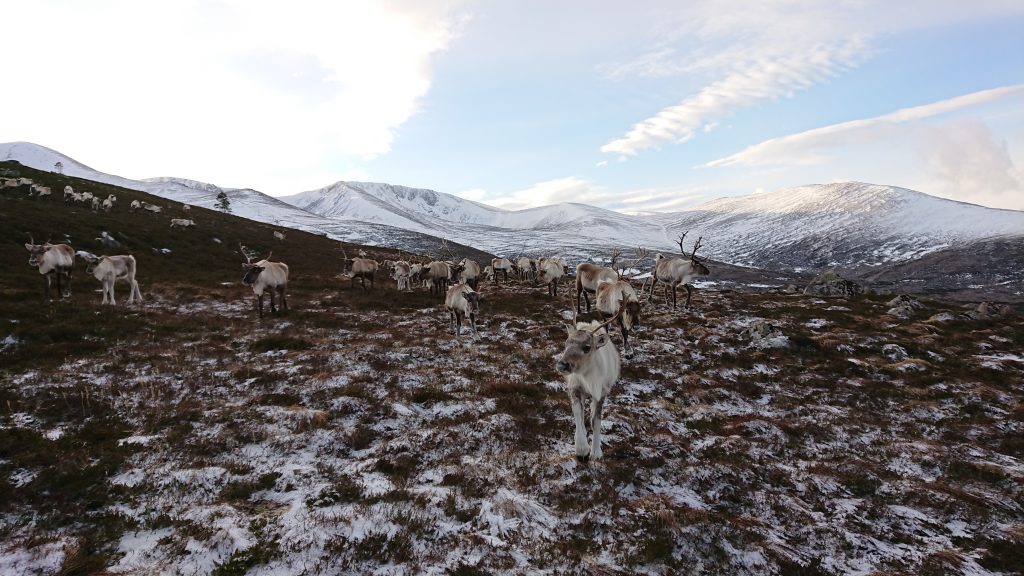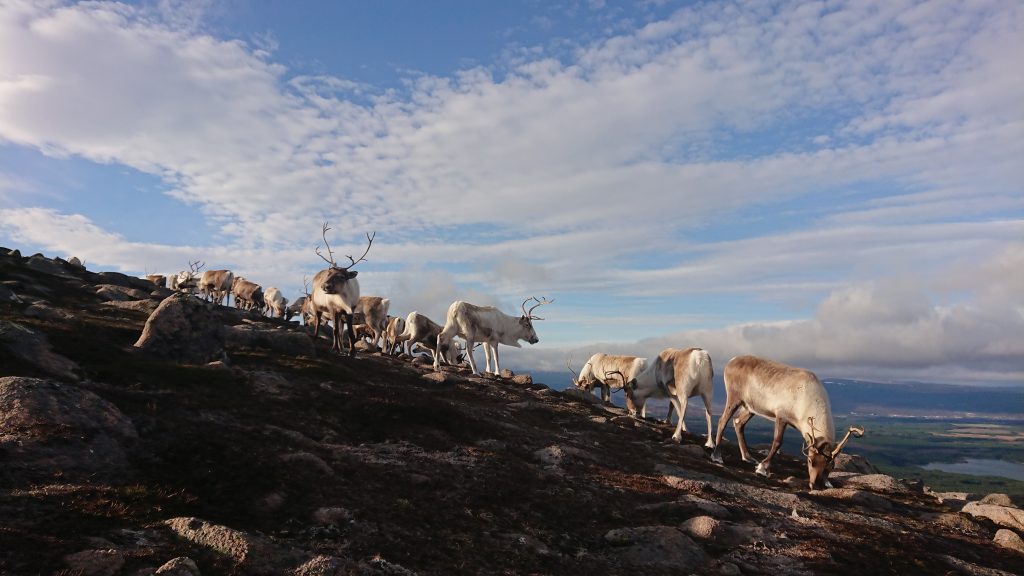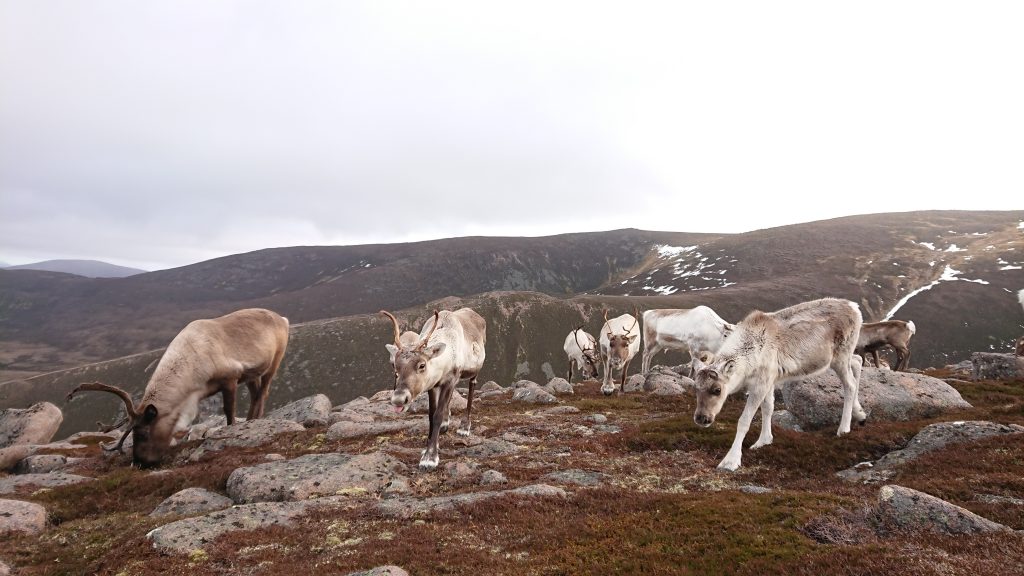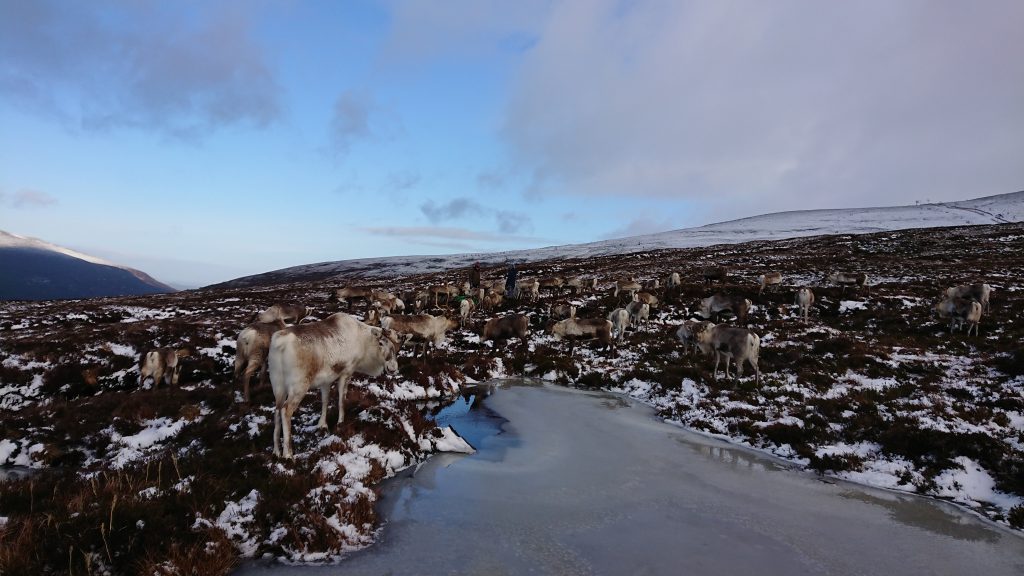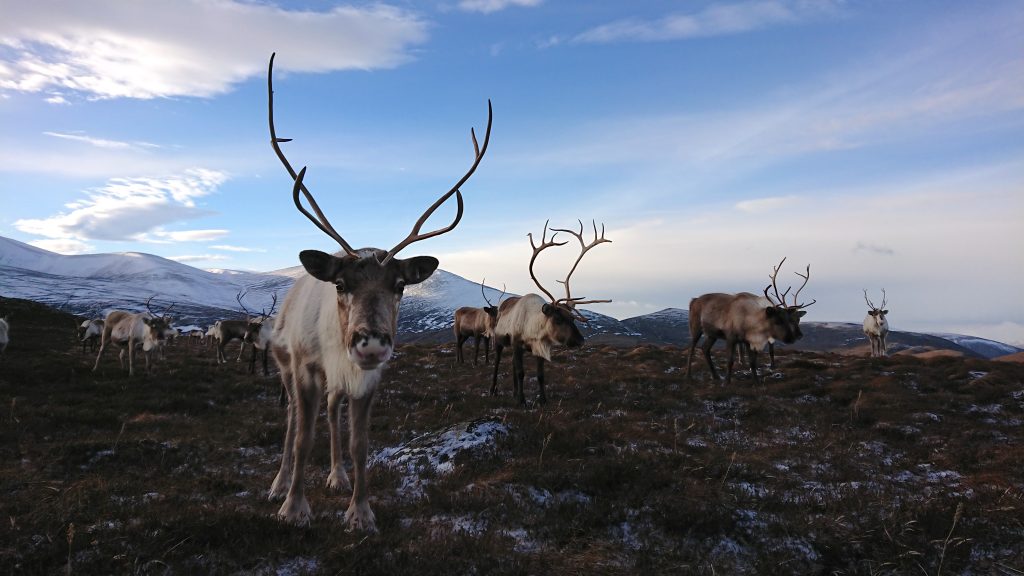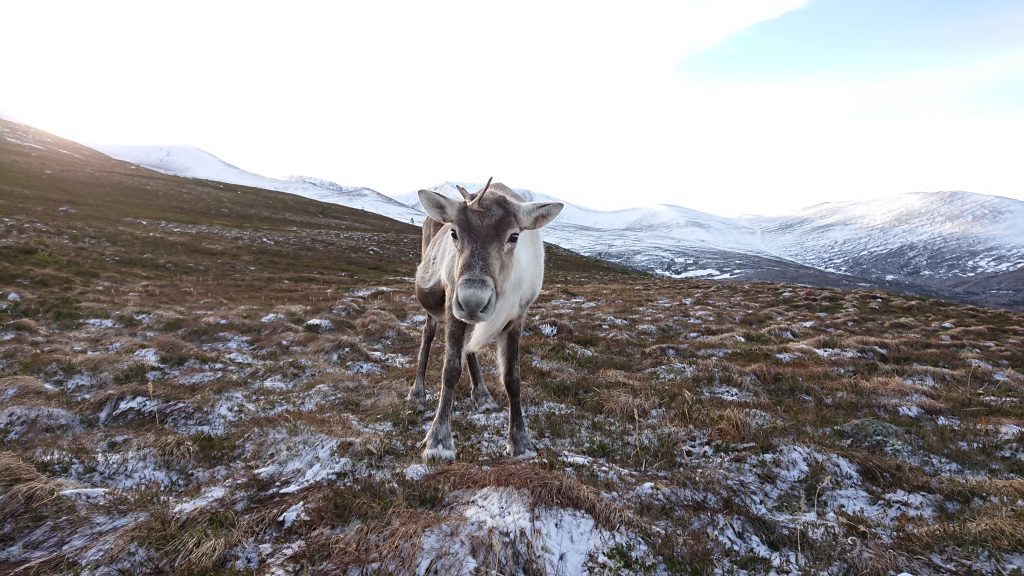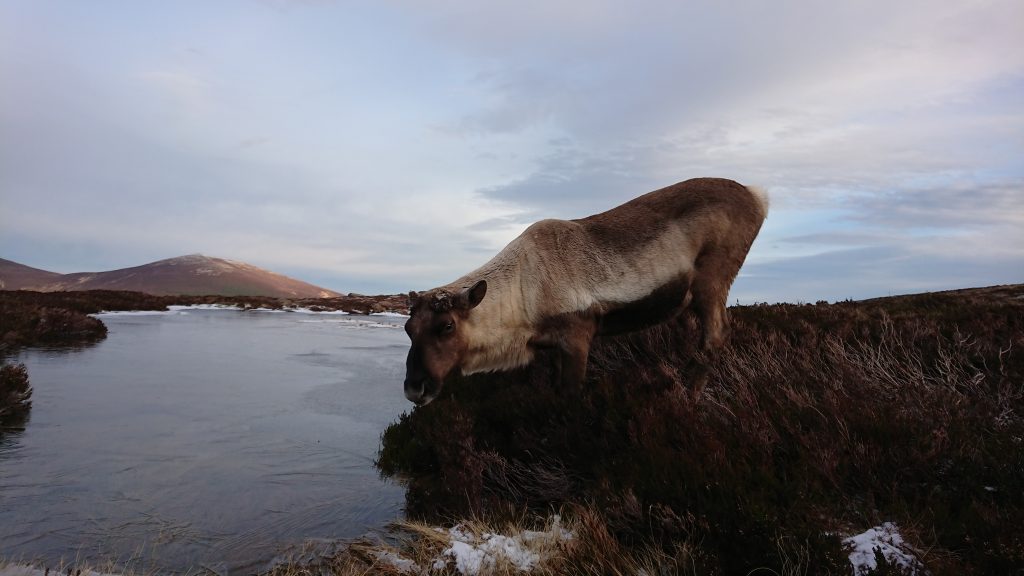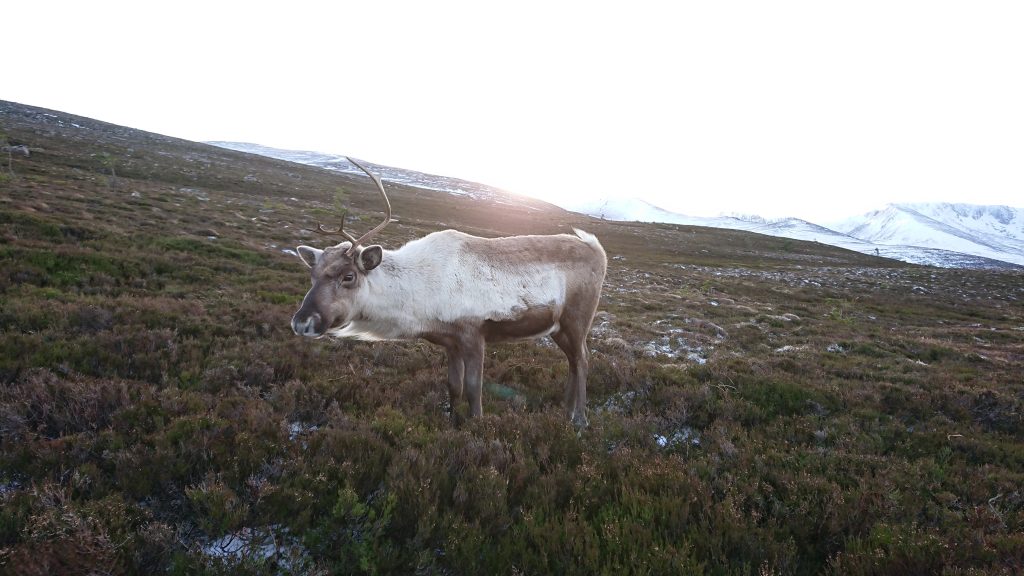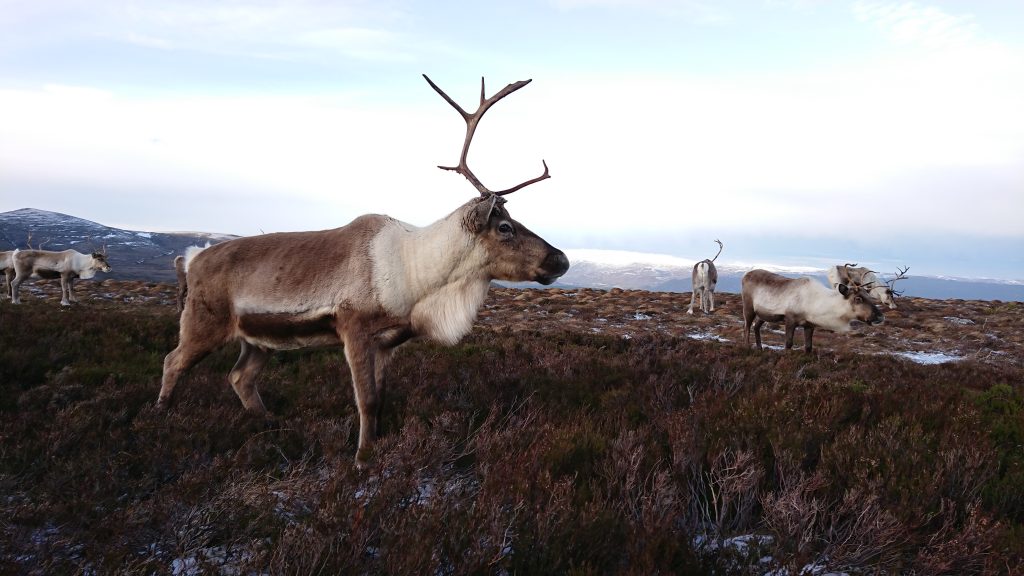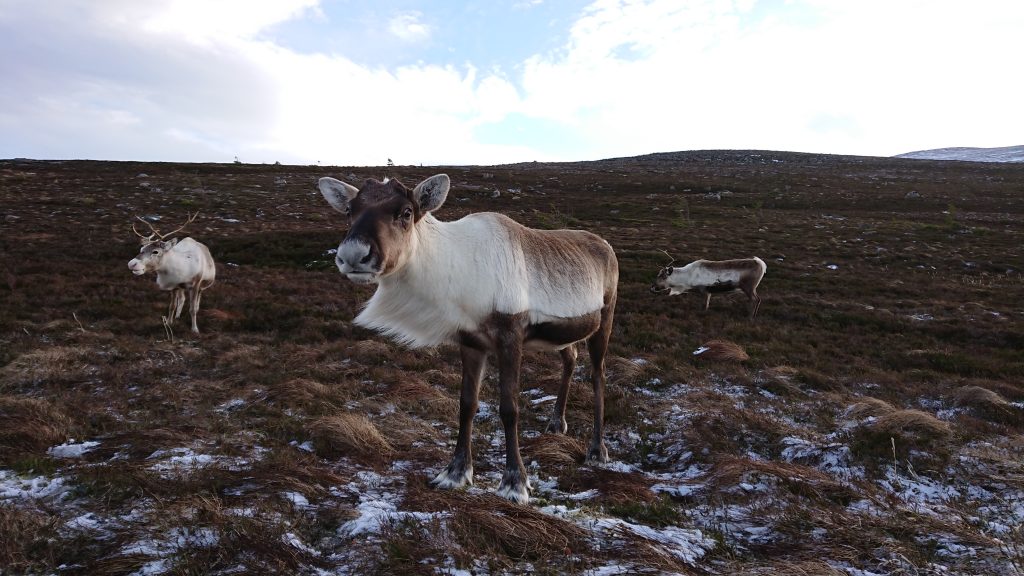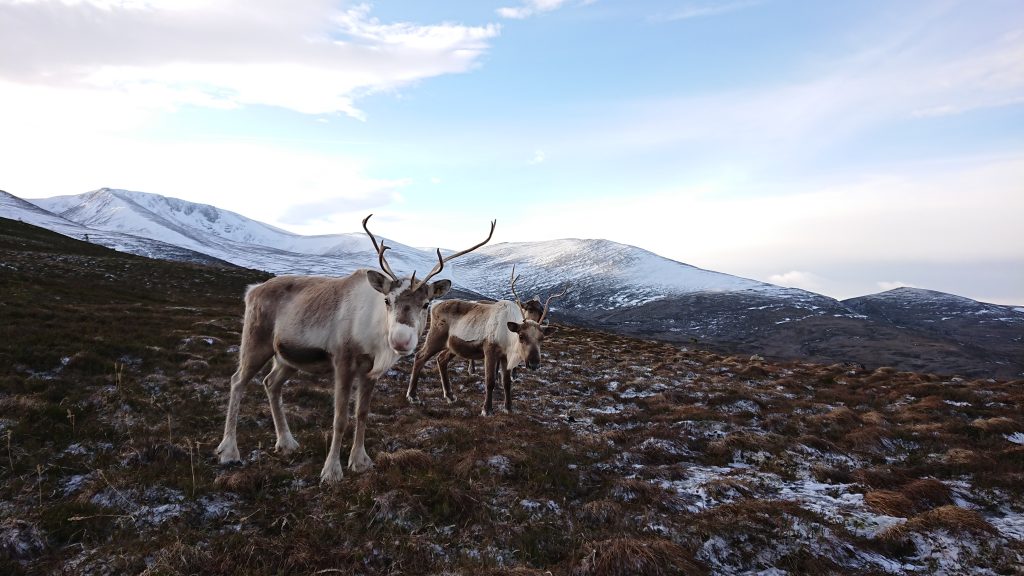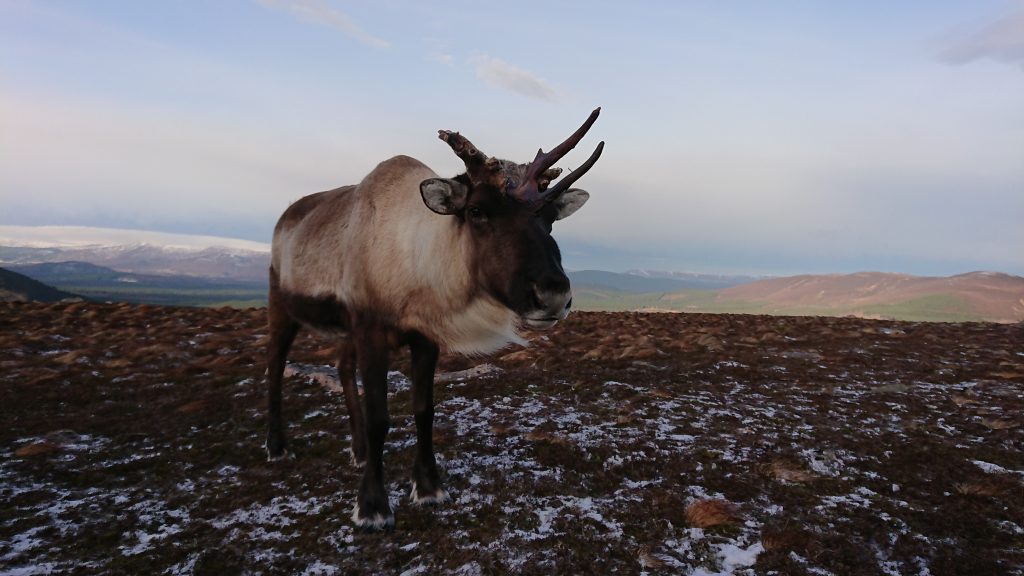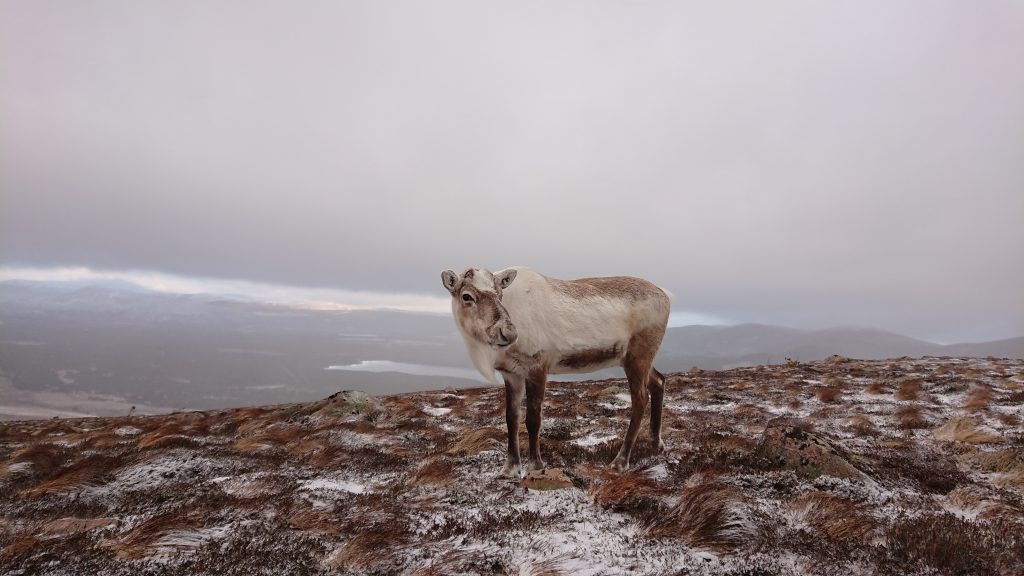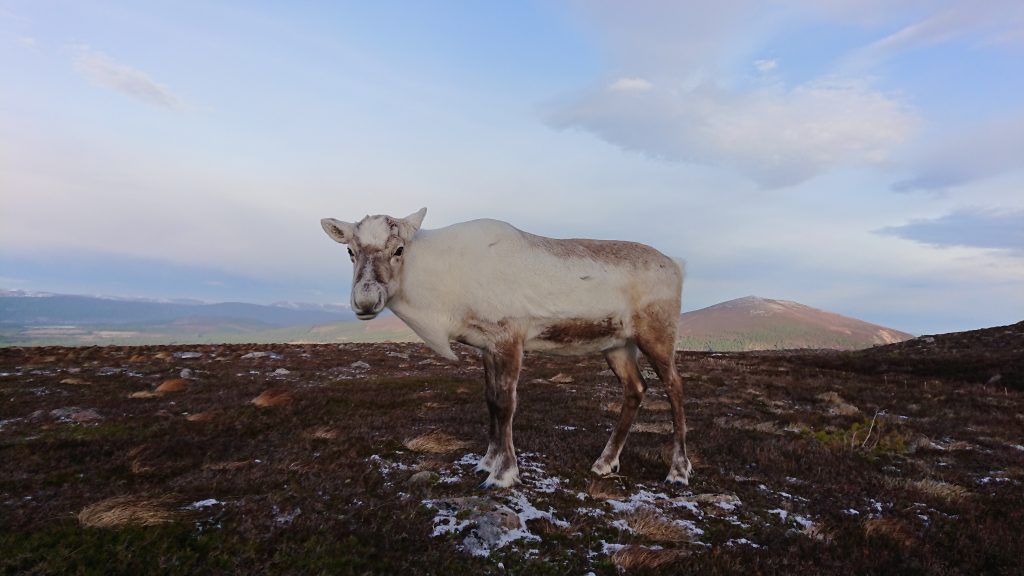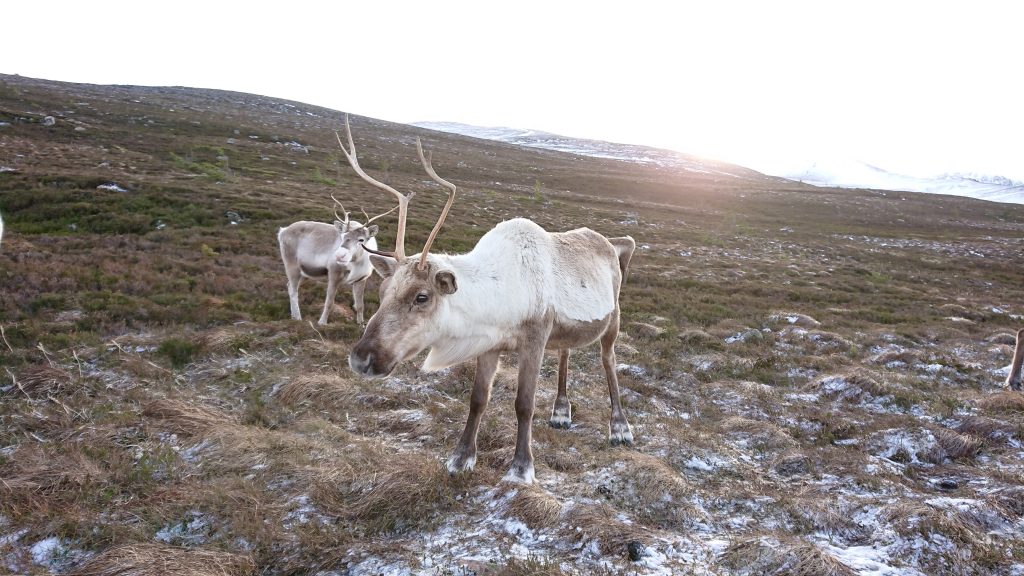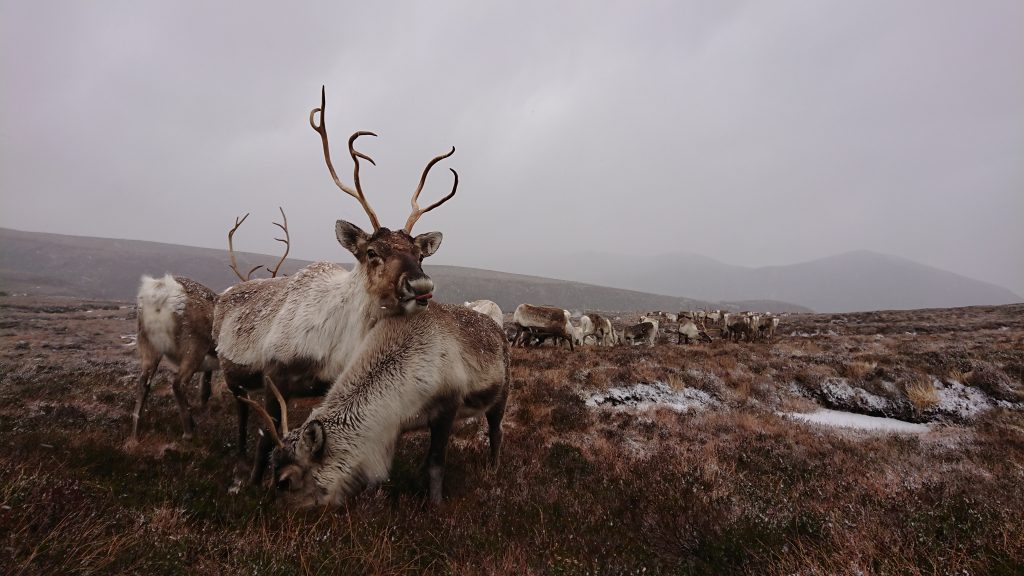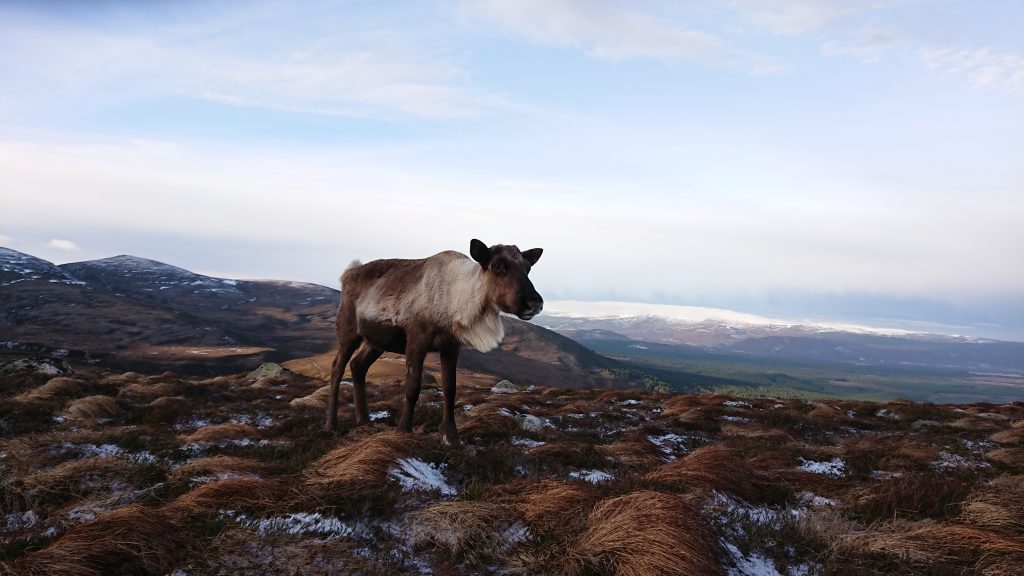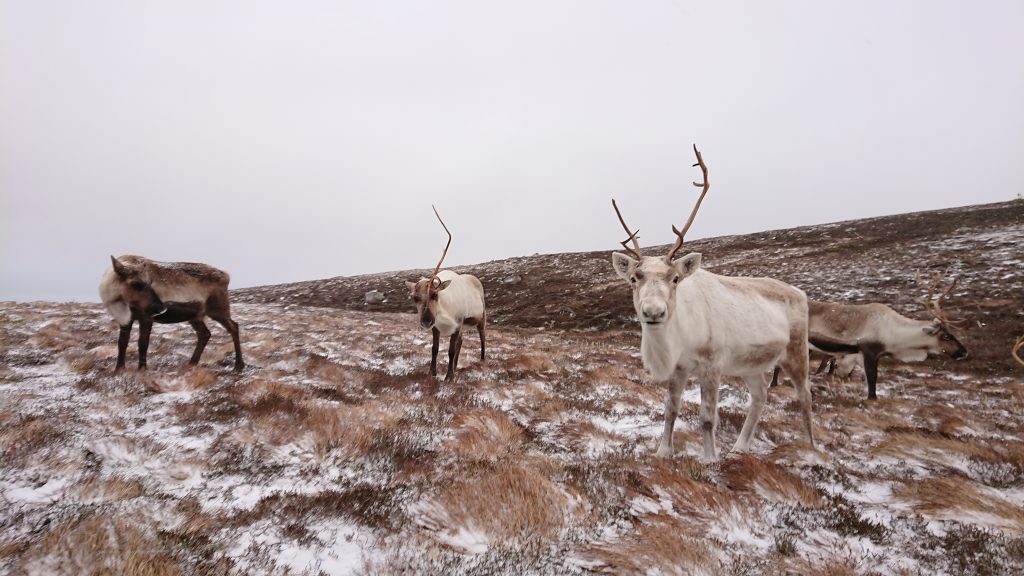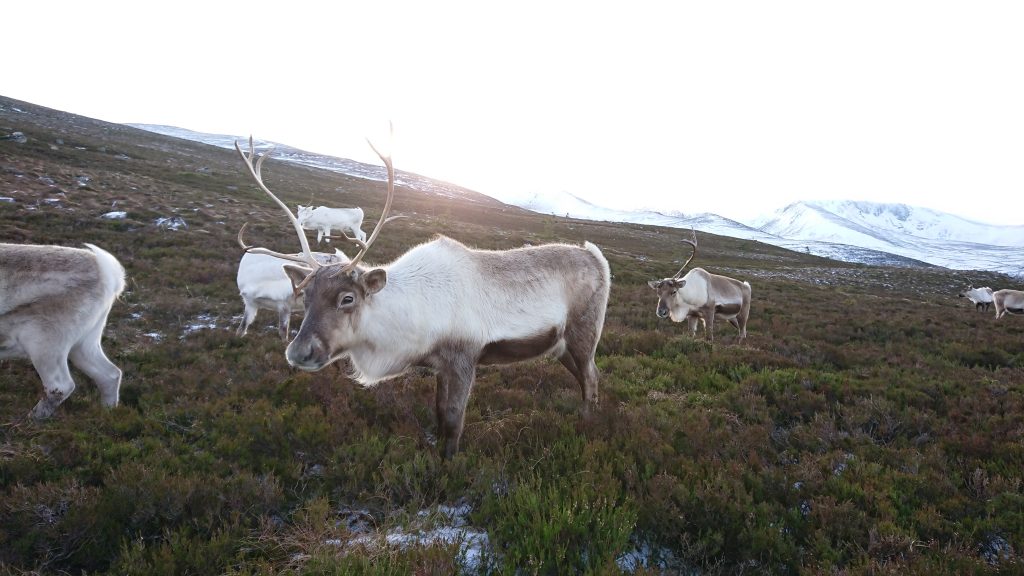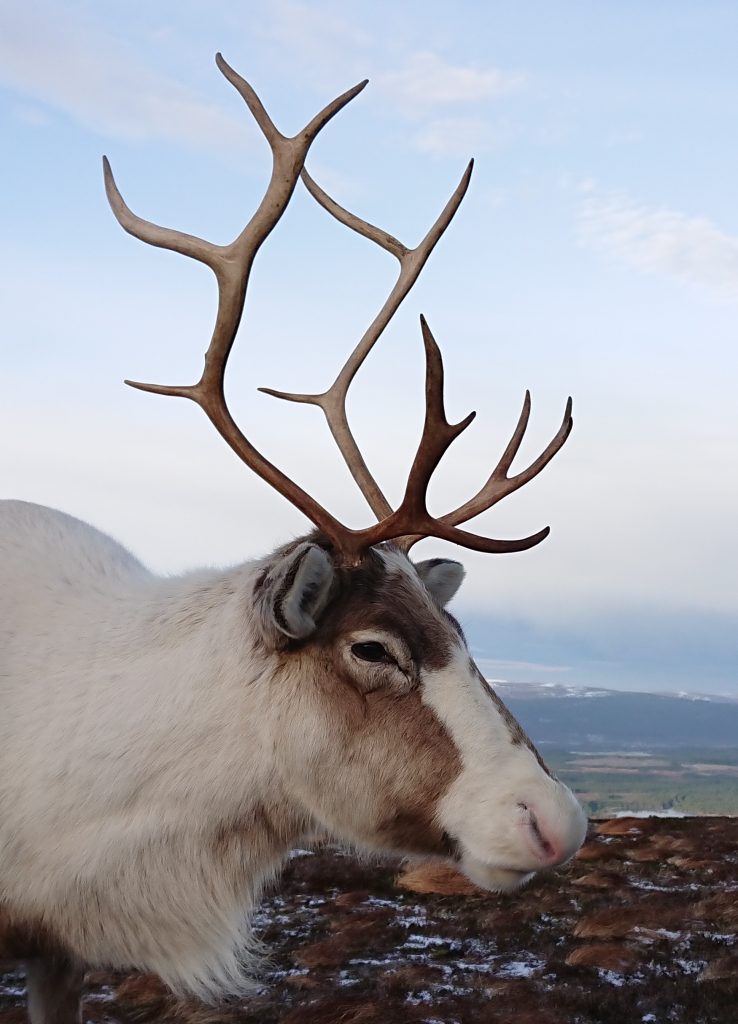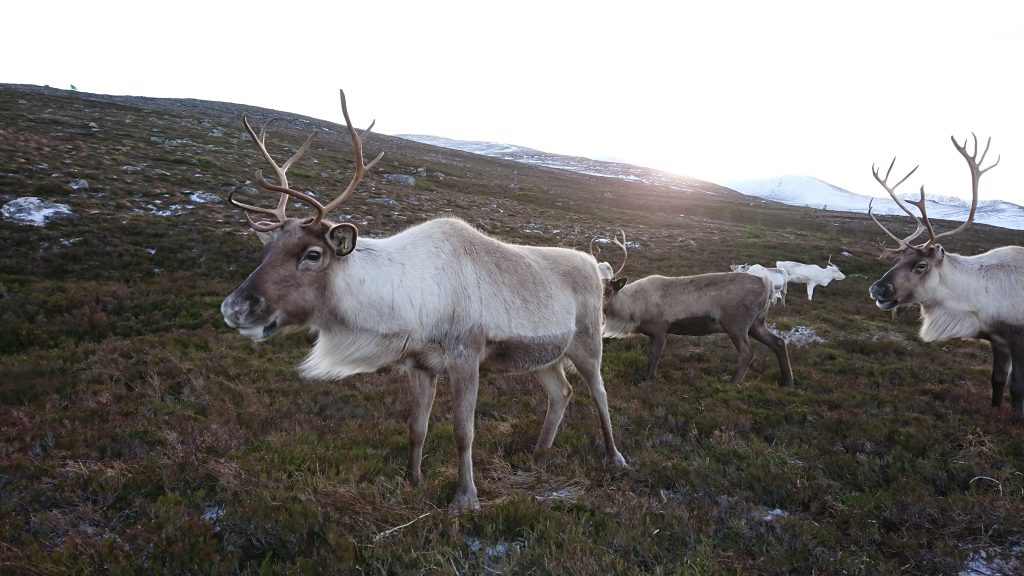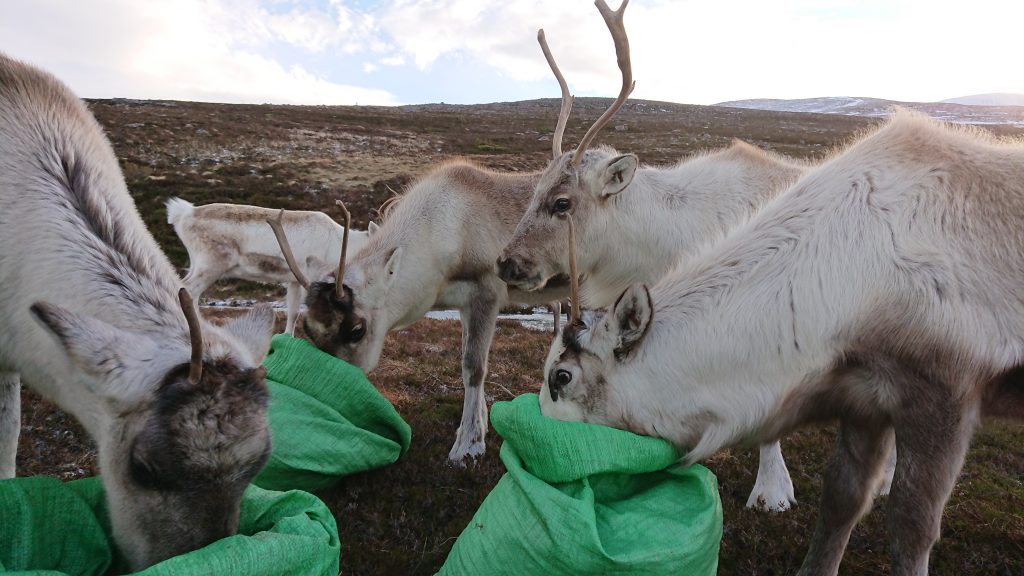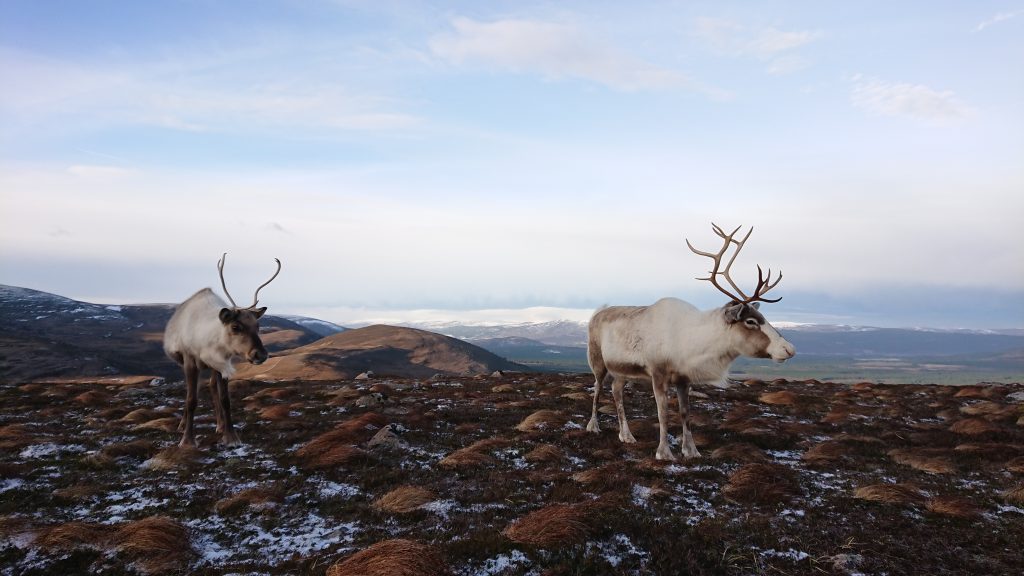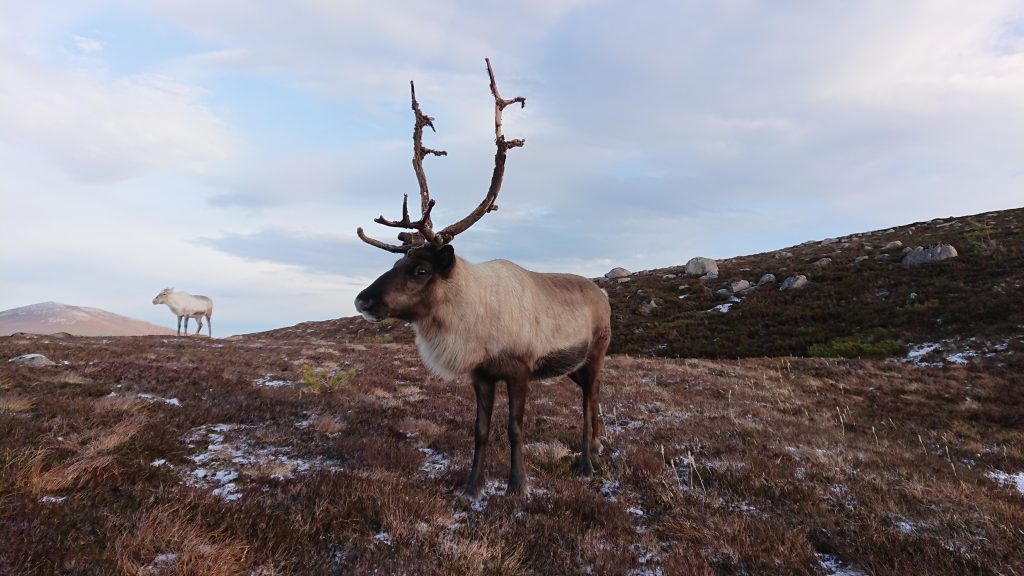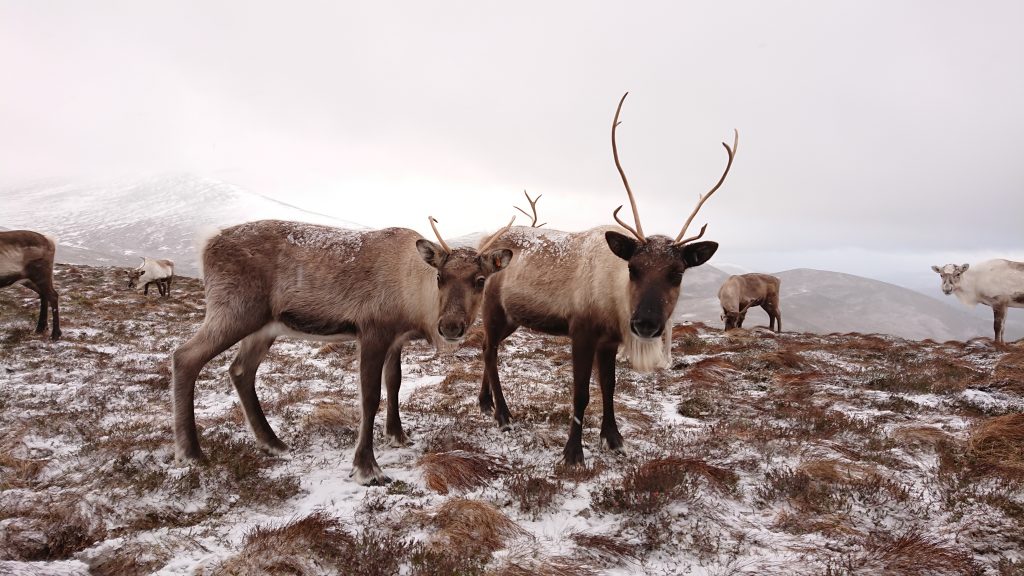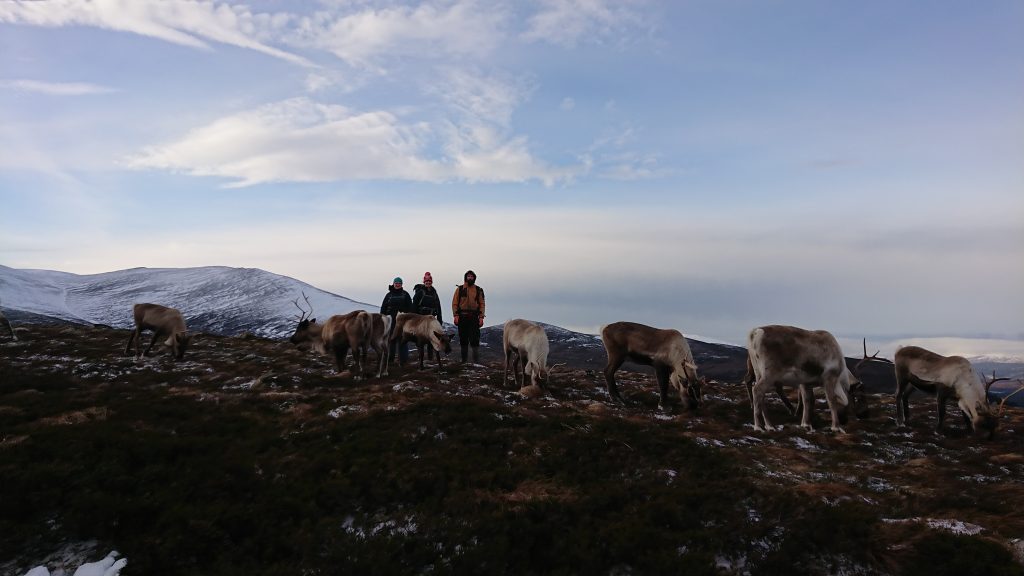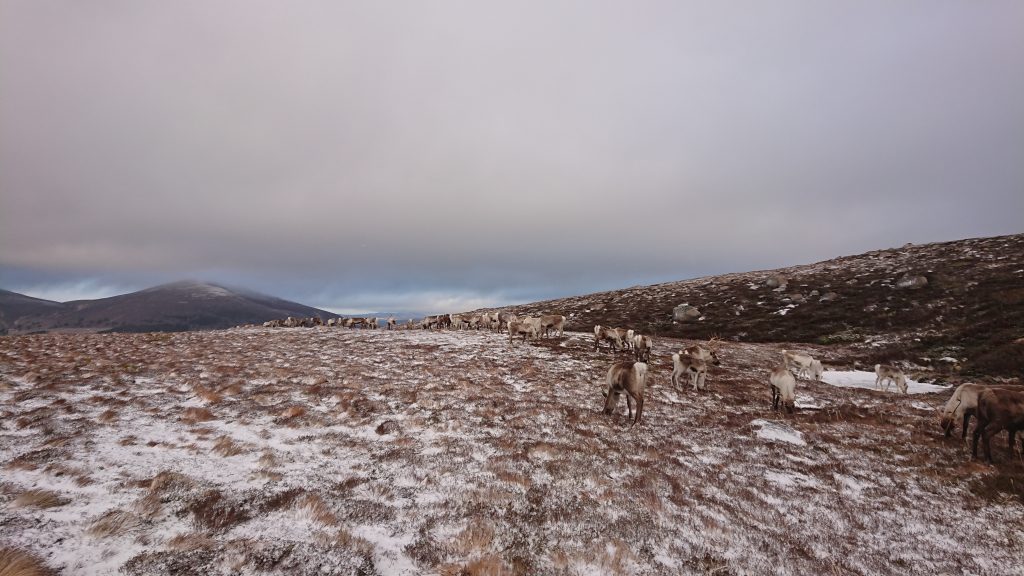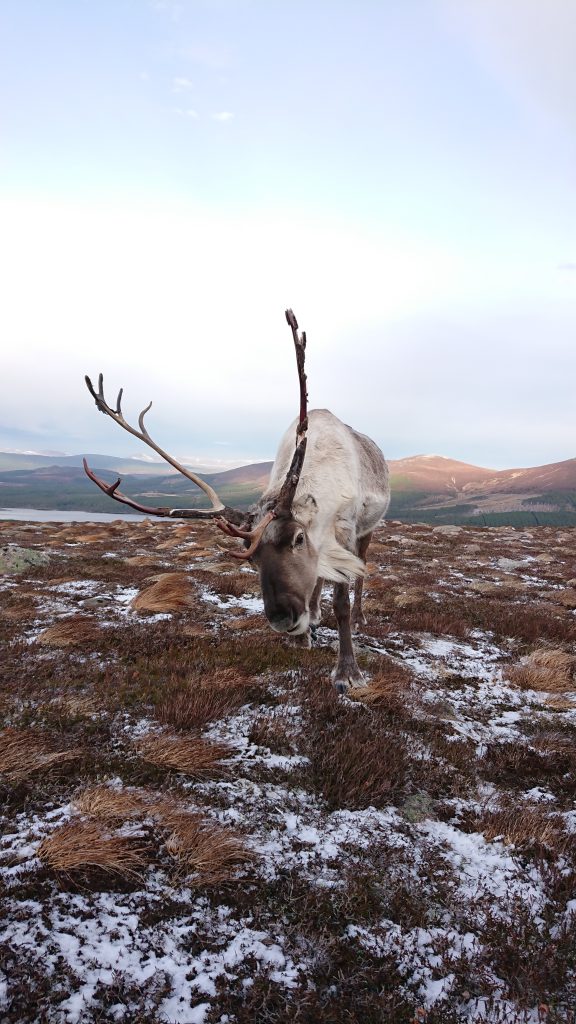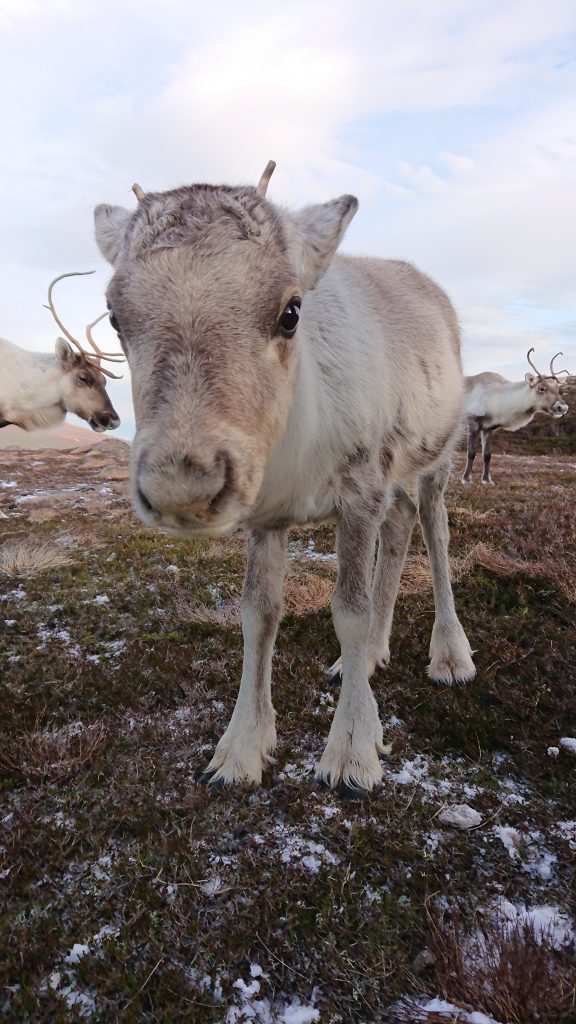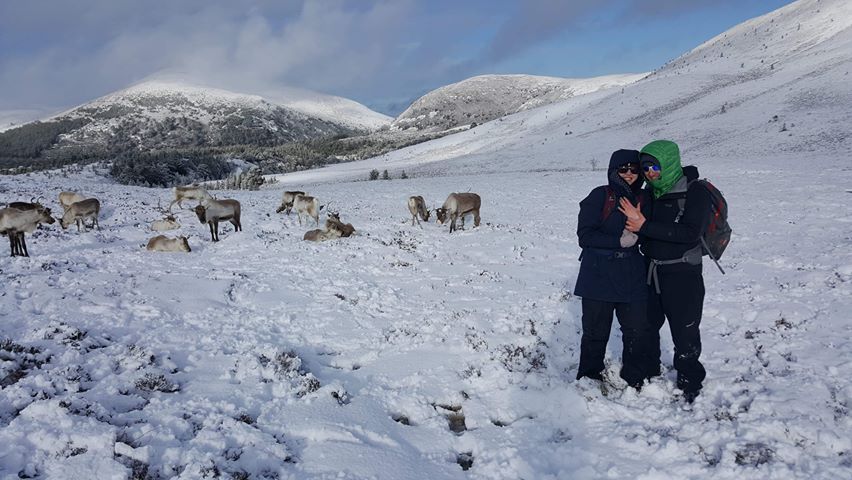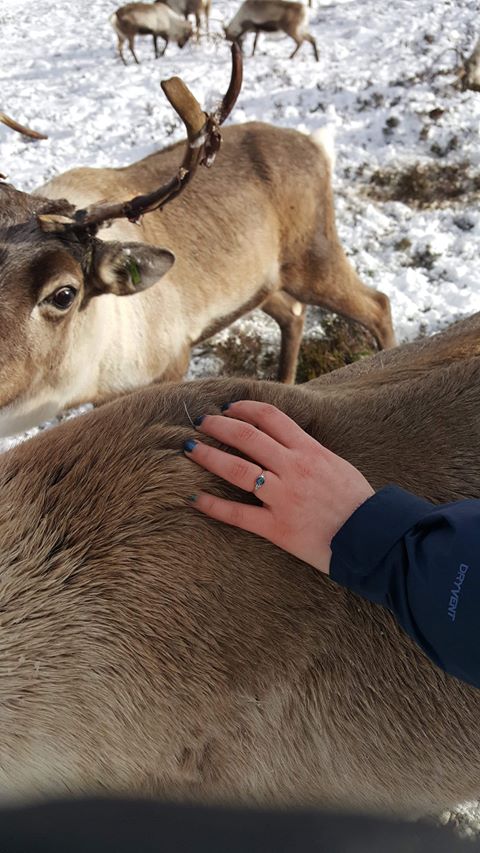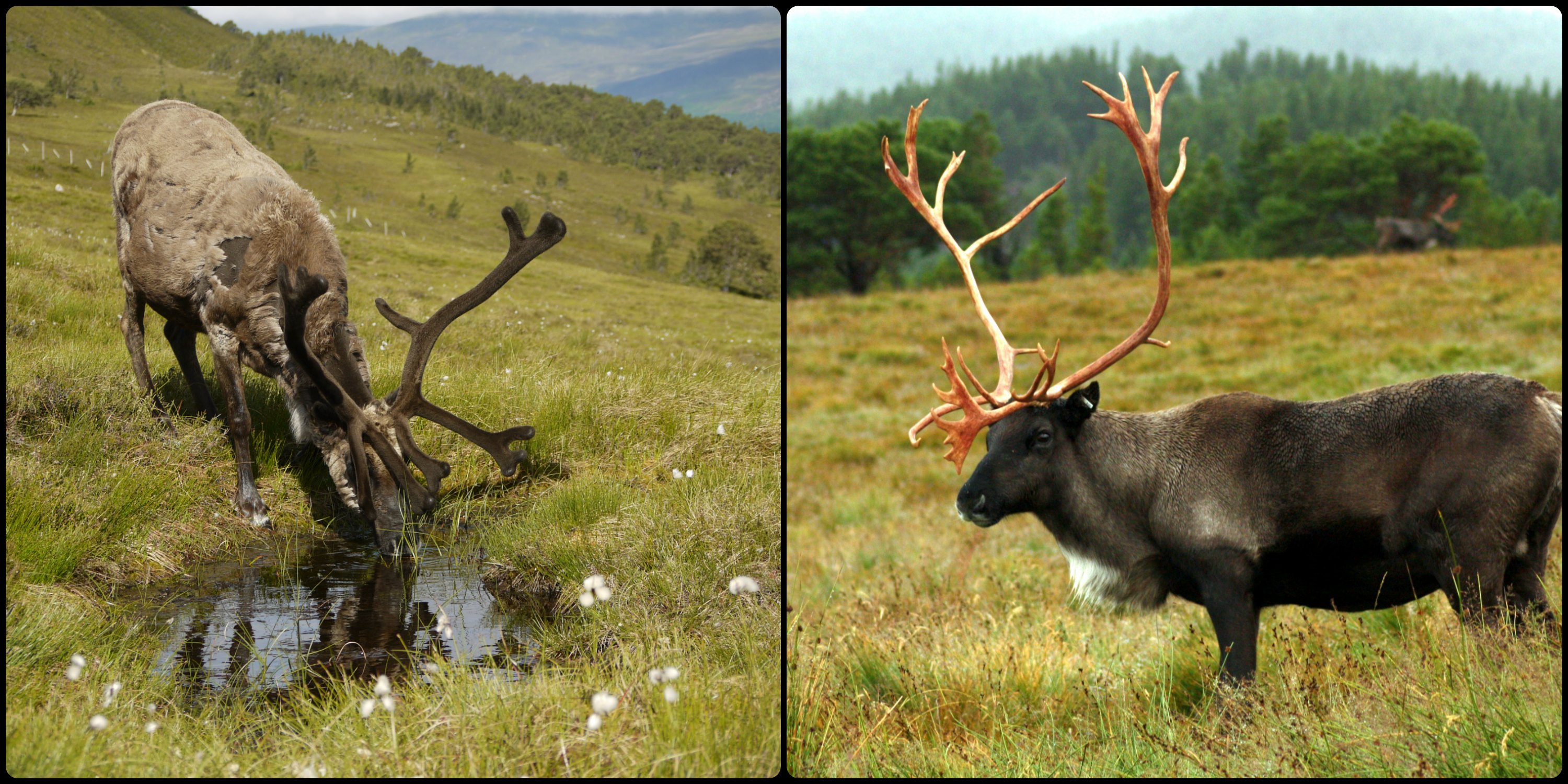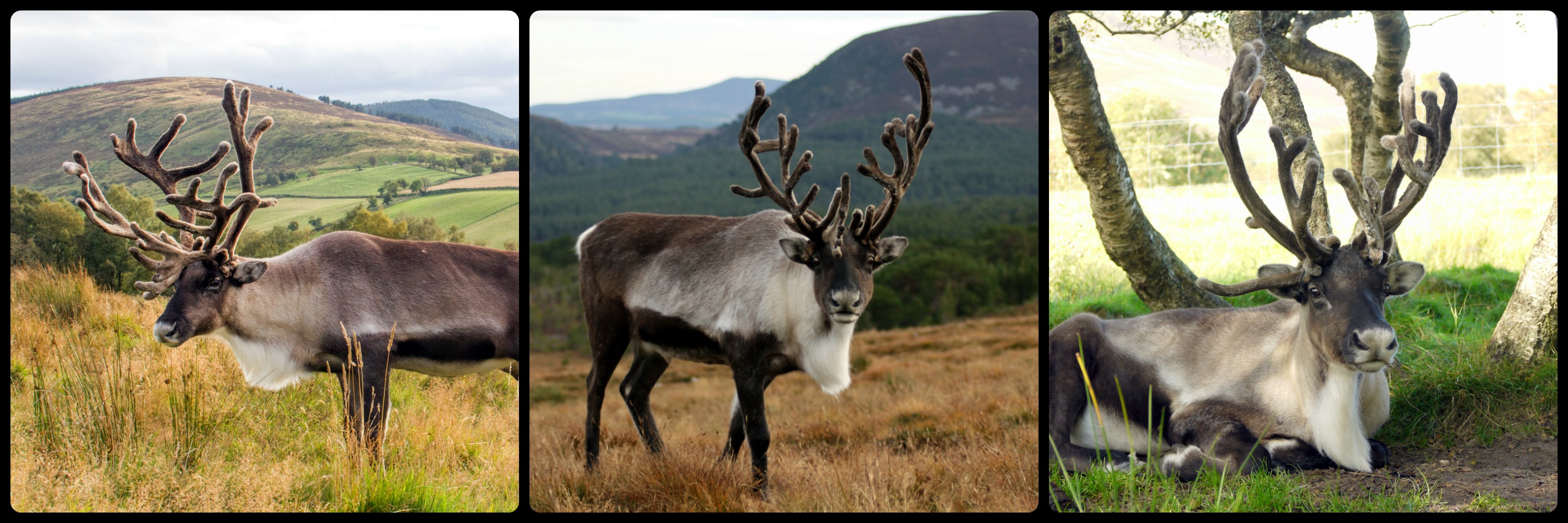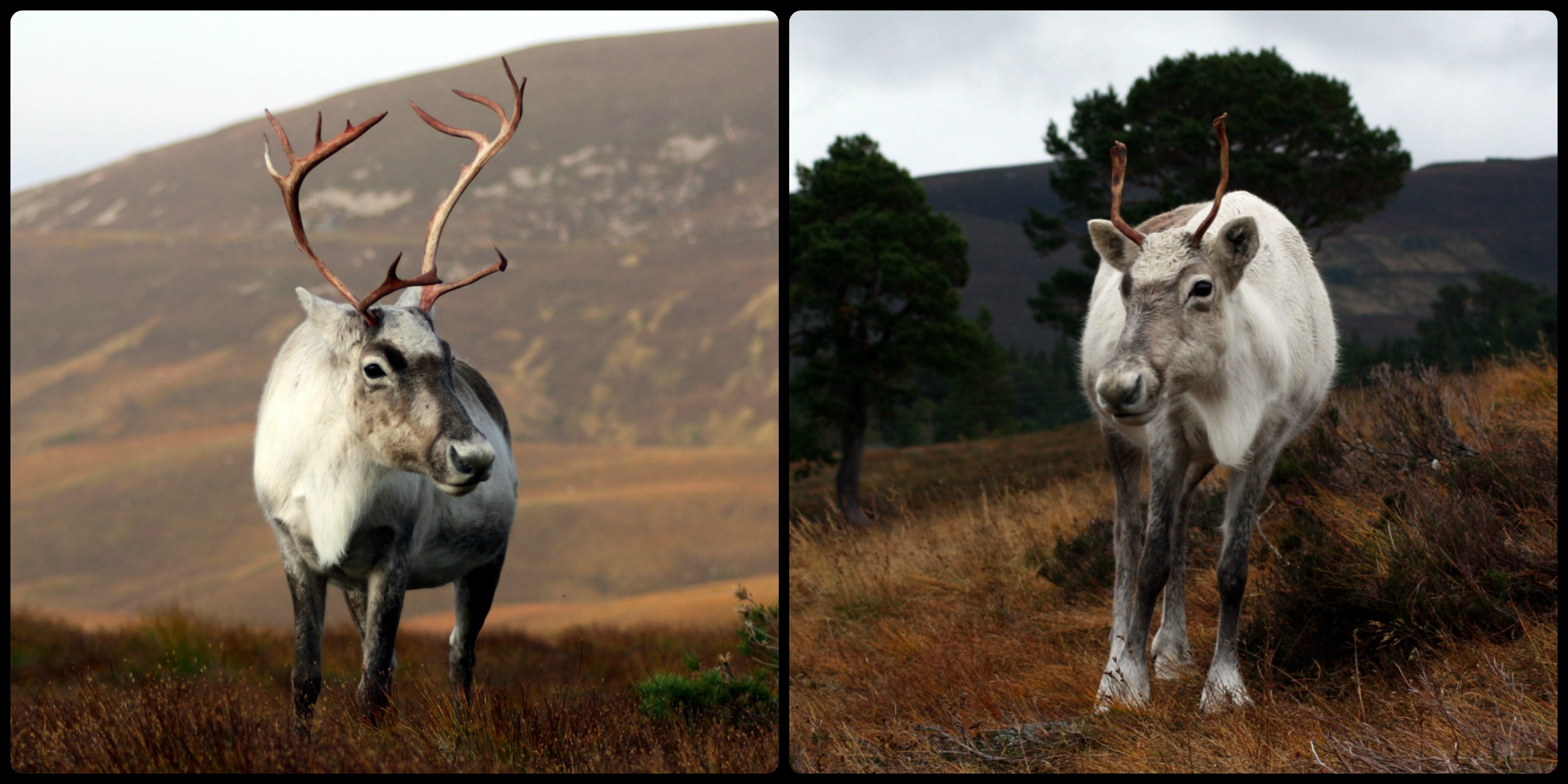Whilst I’m normally based over at the main visitor centre in Glenmore, with the current chaotic situation I’m spending a lot more of my time at our second base, the hill farm at Glenlivet. The Smiths have farmed there since 1990, specializing in native breeds such as Belted Galloway cattle, Soay sheep and Wild boar crosses, plus of course extra summer hill grazing for our lovely reindeer herd. I thought I’d give all of you wonderful folk a snapshot of one of my typical days at the farm…
7.15am: Up bright and early, it’s a glorious sunny day outside. Breakfast, pack my lunch (leftovers from last night, win!) and plenty of snacks, just like the reindeer my appetite is never satisfied!
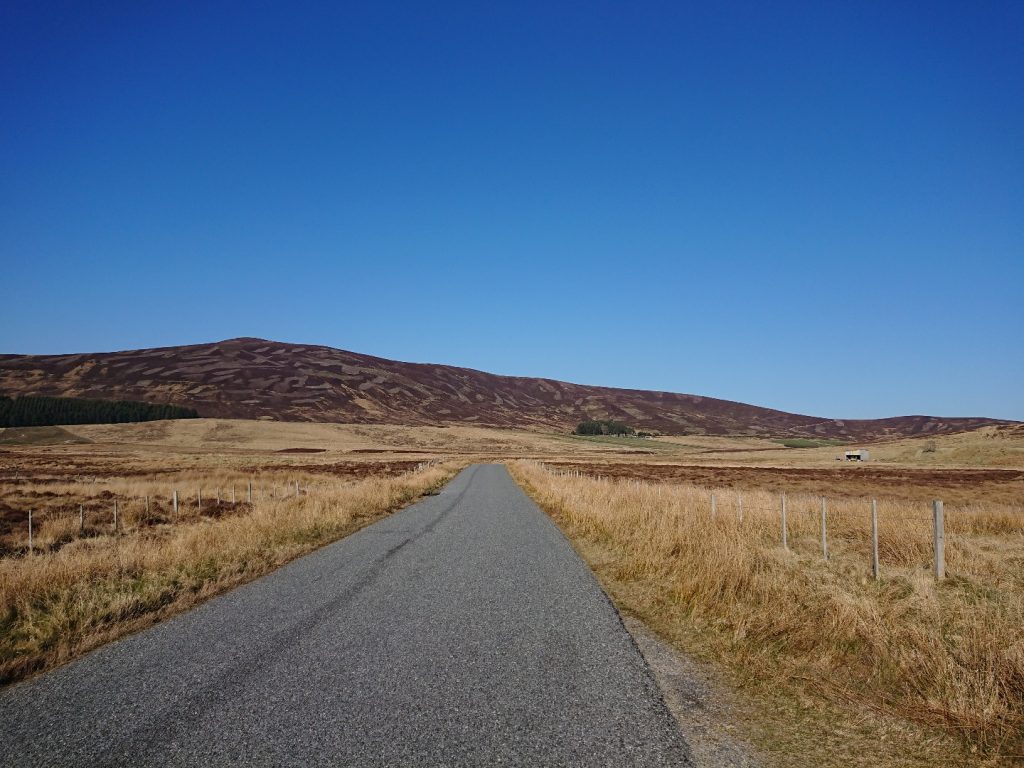
7.55am: Out of the house to head over to the farm. It’s about a 35 minute drive for me, and at the moment it’s rare for me to pass more than a couple of cars. Not a bad commute!
8.30am: Arrive at the farm and make a plan for the day. The morning is usually spent feeding the animals. I load up the quad bike, a lifesaver when lugging heavy feed up hilly fields!
9am: First stop, the pigs. We have a mix of Wild boar and Tamworth, also known as “Iron Age” pigs. They get fed first because if you leave them too late they make a pretty big effort to break out and come and find the food themselves! When I first met the pigs years ago, I was a little daunted as they charge up and down grunting and slathering ready to eat, but actually they’re pretty well behaved and haven’t attempted to nibble on me yet!
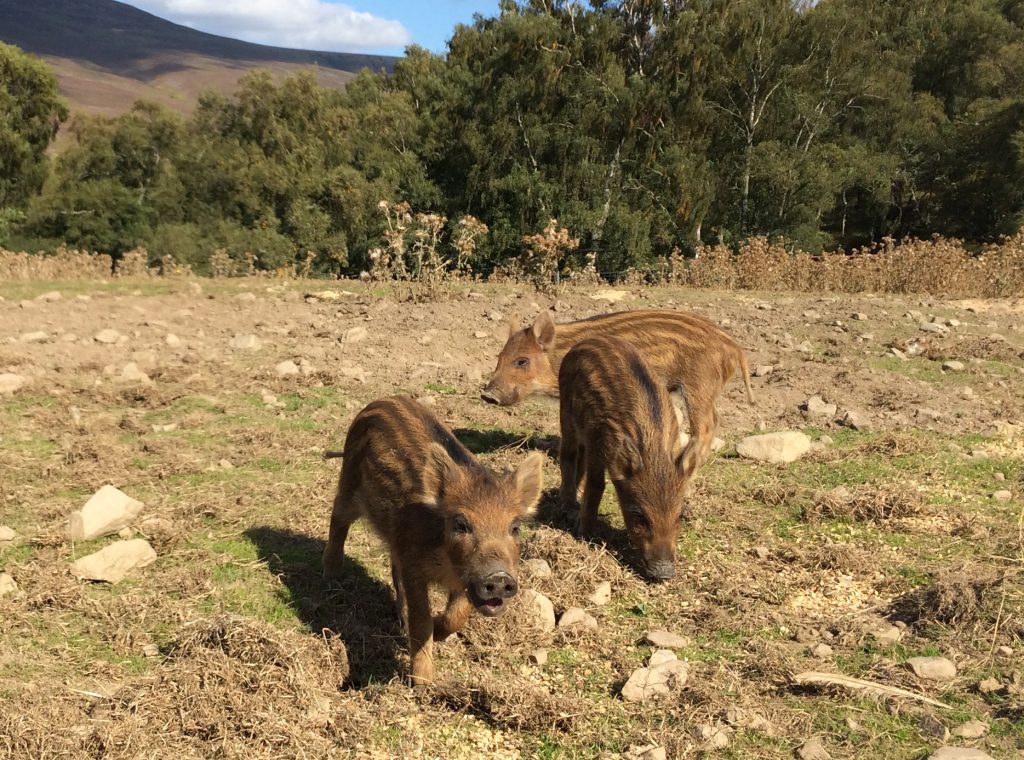
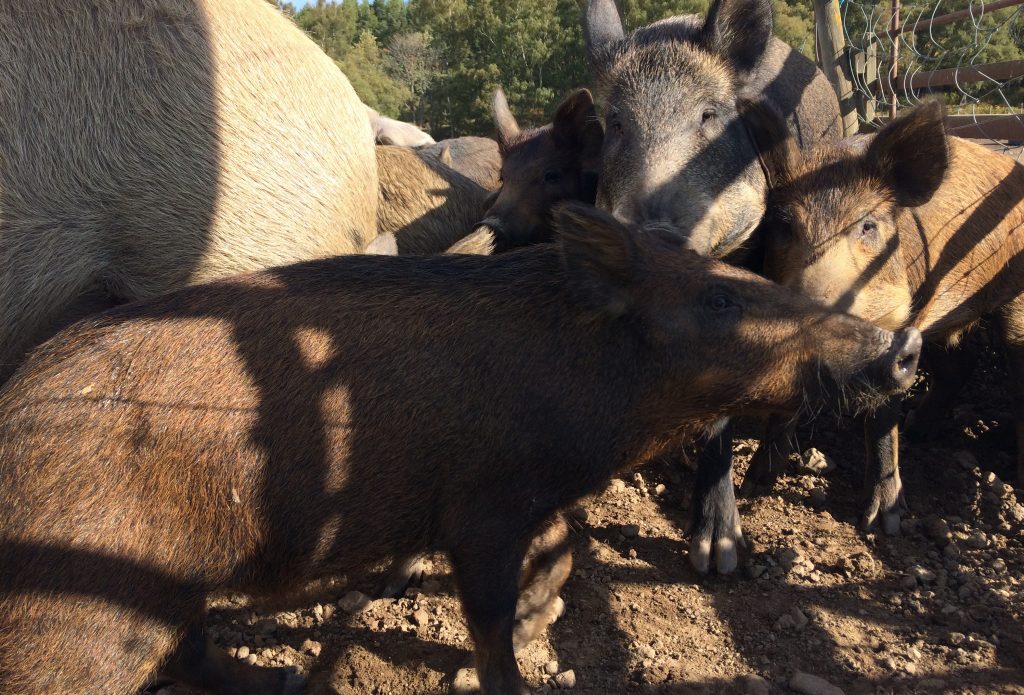
Next up are some of the Soay sheep and Red deer. Soays are quite wild in nature, a lot more skittish than most sheep you’ll meet, which also means they’re hardy and self-sufficient, rarely needing any assistance lambing or seeking much shelter from the weather. But they do enjoy some extra feed! The red deer are very different from the reindeer, much livelier and jumpier, but come charging after the quad in expectation! Their antlers are growing at an insane rate – every time I see them they seem to be a few inches bigger…
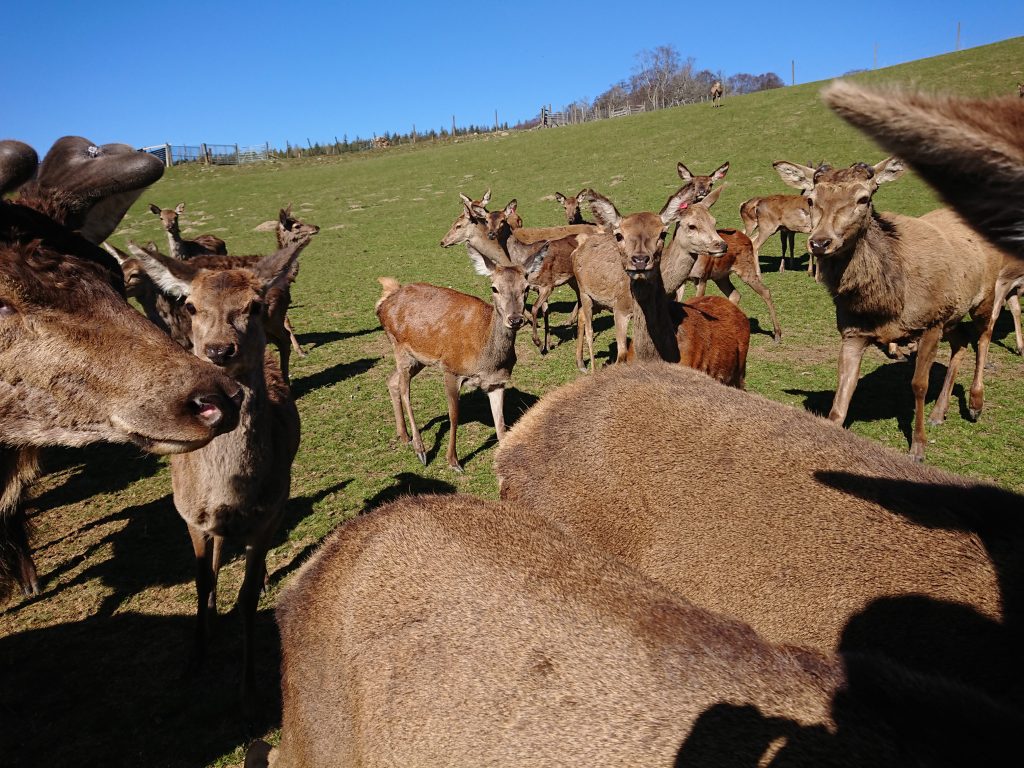
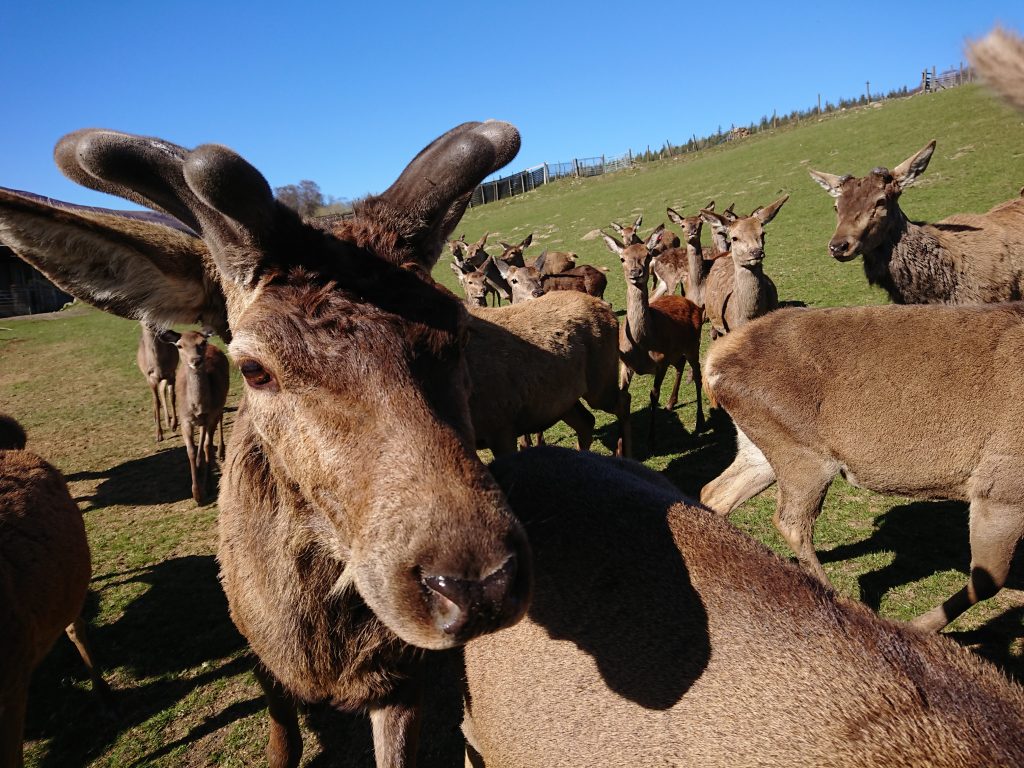
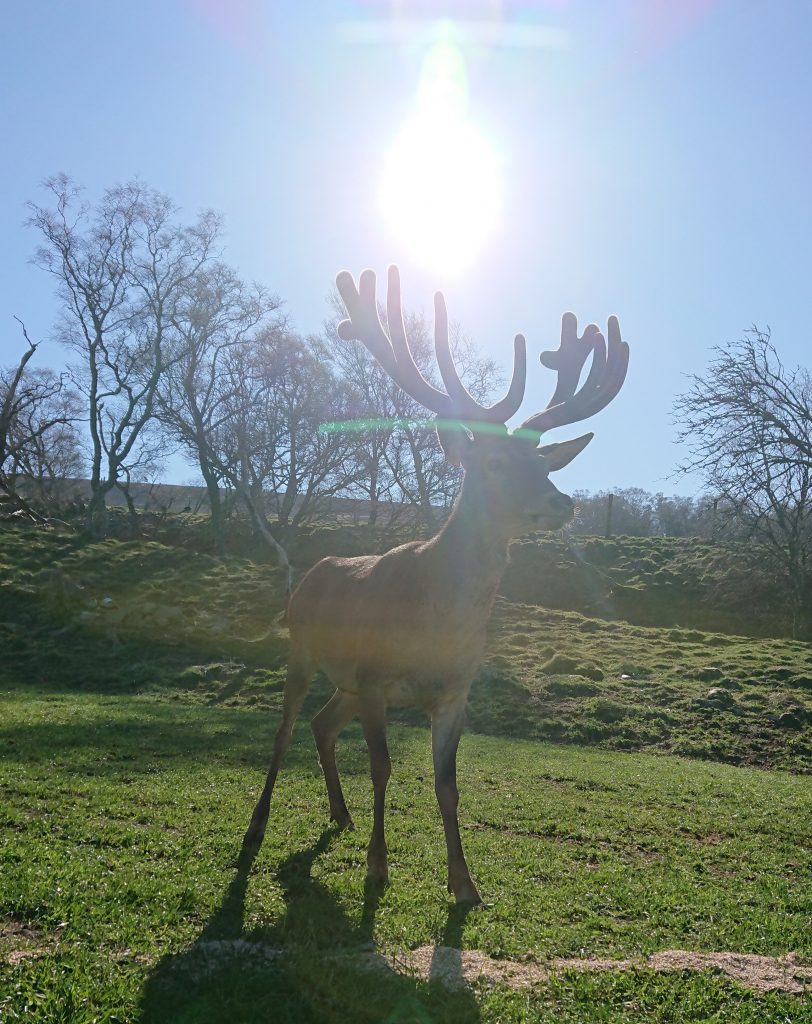
10am: After reloading the quad with more feed, it’s up the hill to check on the reindeer. Throughout spring we have the male reindeer in what we call the “French” enclosure, as it’s where we initially housed our reindeer who joined us from France in 1995 (original hey?!). There is a large shed which is handy for providing shade and also for handling the reindeer for vaccinations etc, and the enclosure extends right up onto the hillside, providing natural grazing.
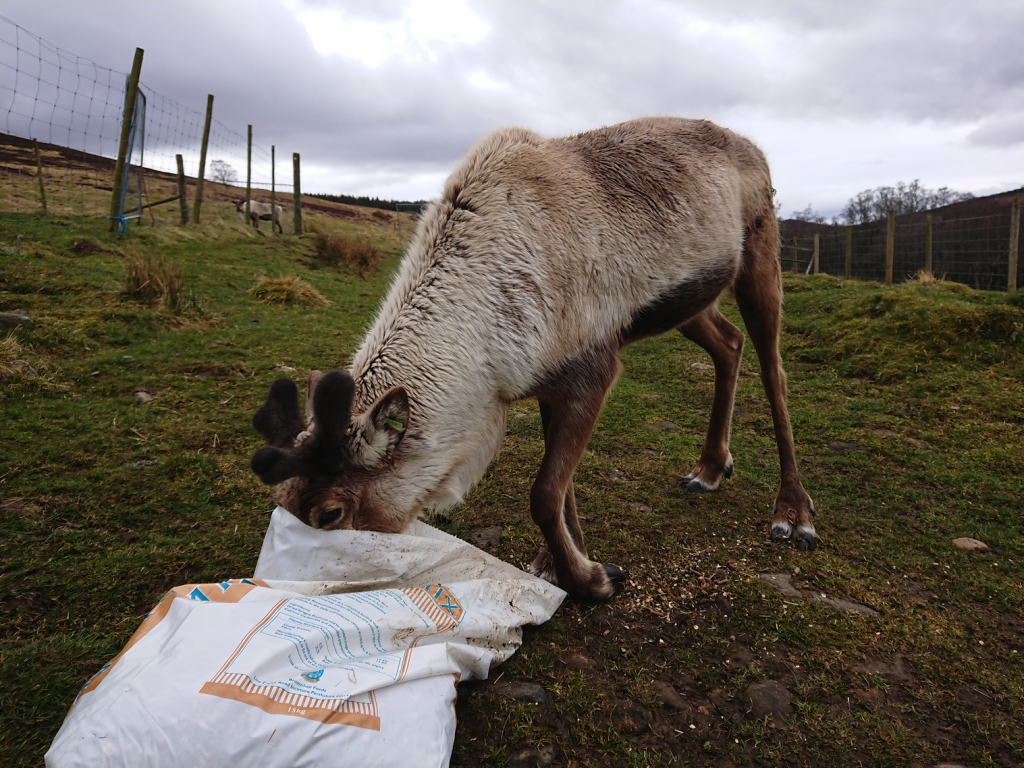
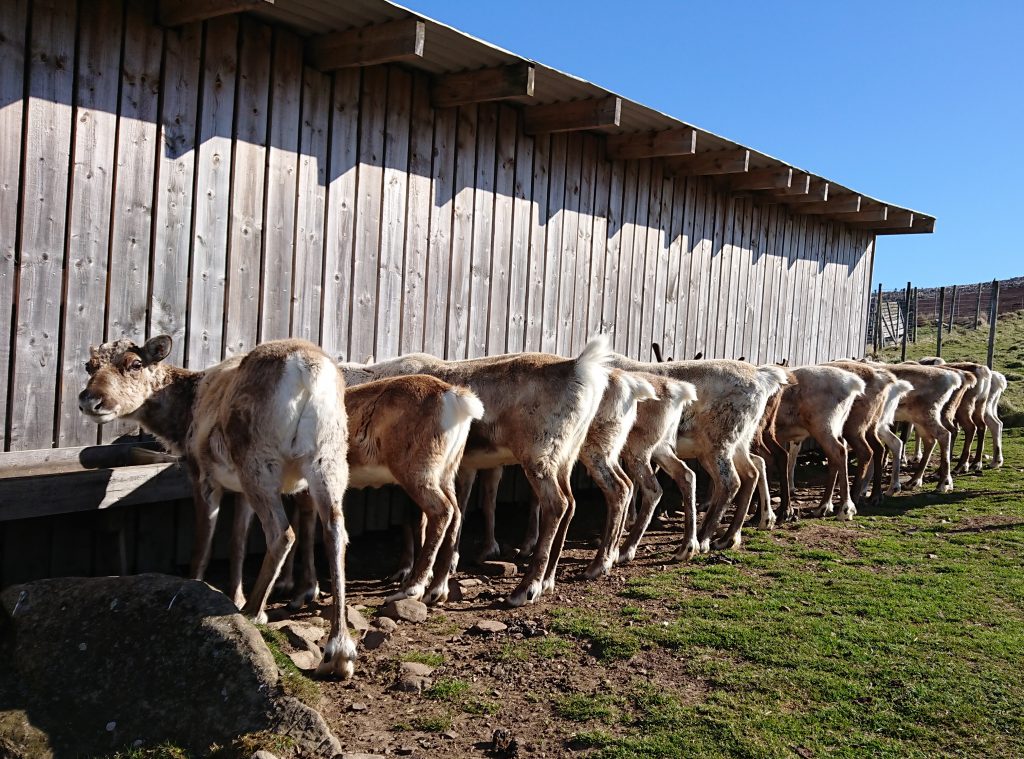
The reindeer have pretty good body clocks and are ready and waiting, and cheerfully come in to eat their food from the troughs round the shed. This gives us an opportunity to check everyone looks happy and healthy – we’re already into tick season, and these biting pests can make our reindeer poorly. Today though, everyone is fine, so after chatting to everyone and admiring their lovely antlers, also growing fast though nowhere near as large as the ones on the red deer, it’s back down the hill.
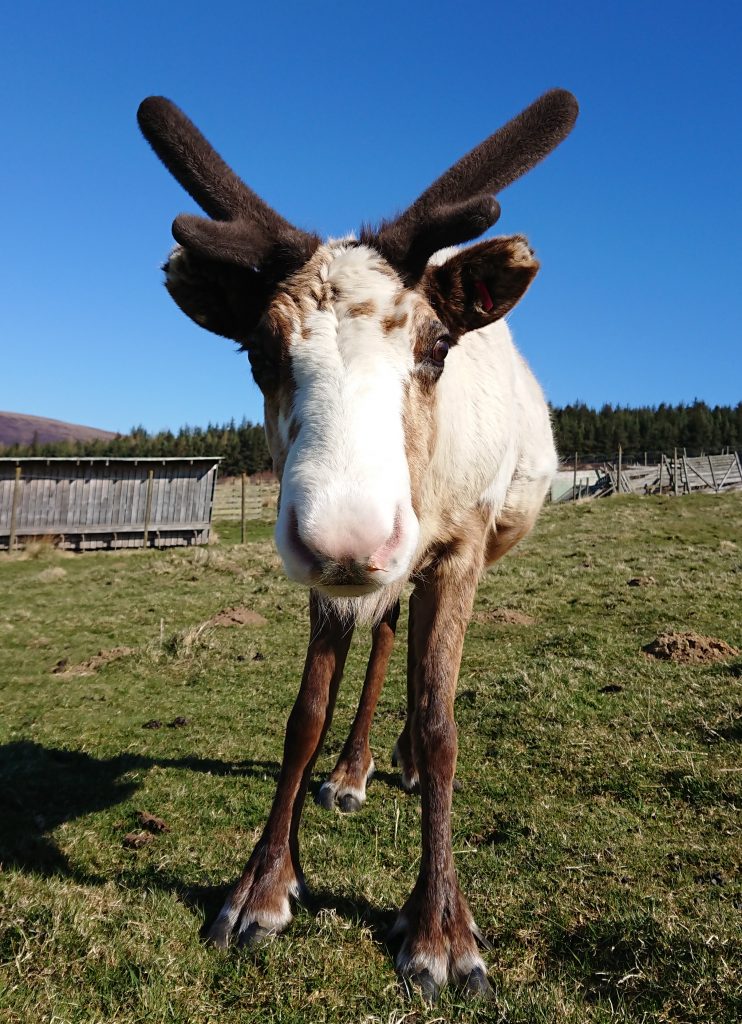
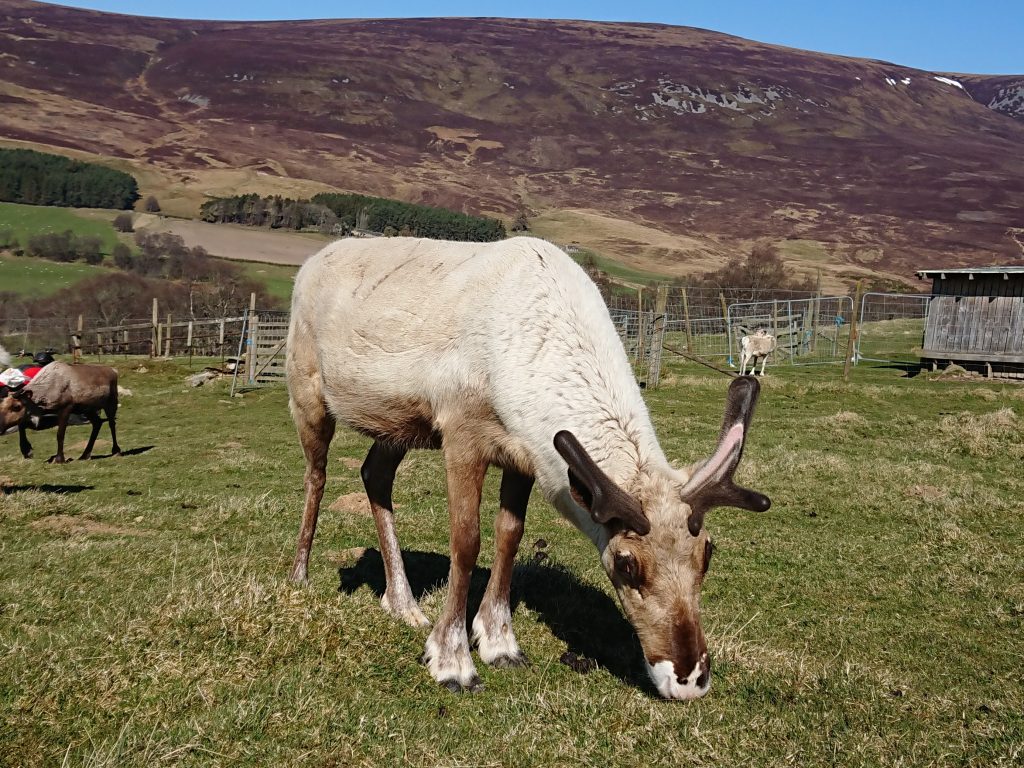
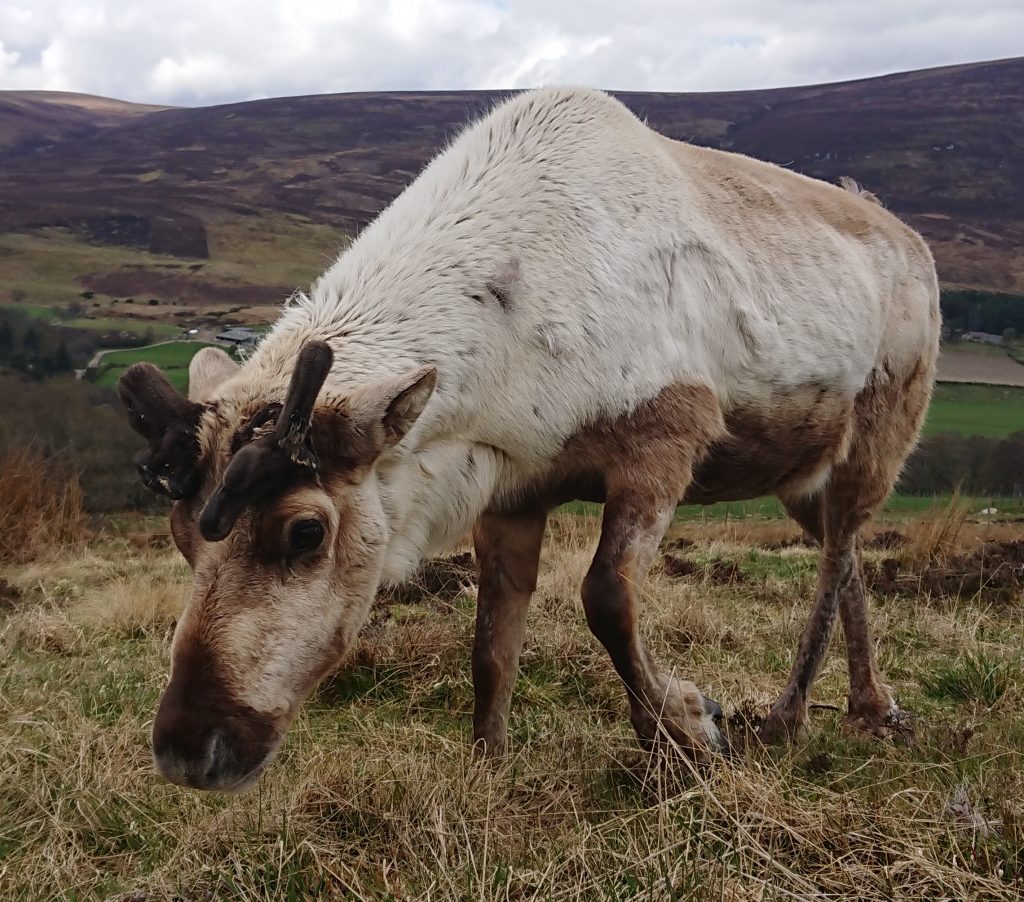
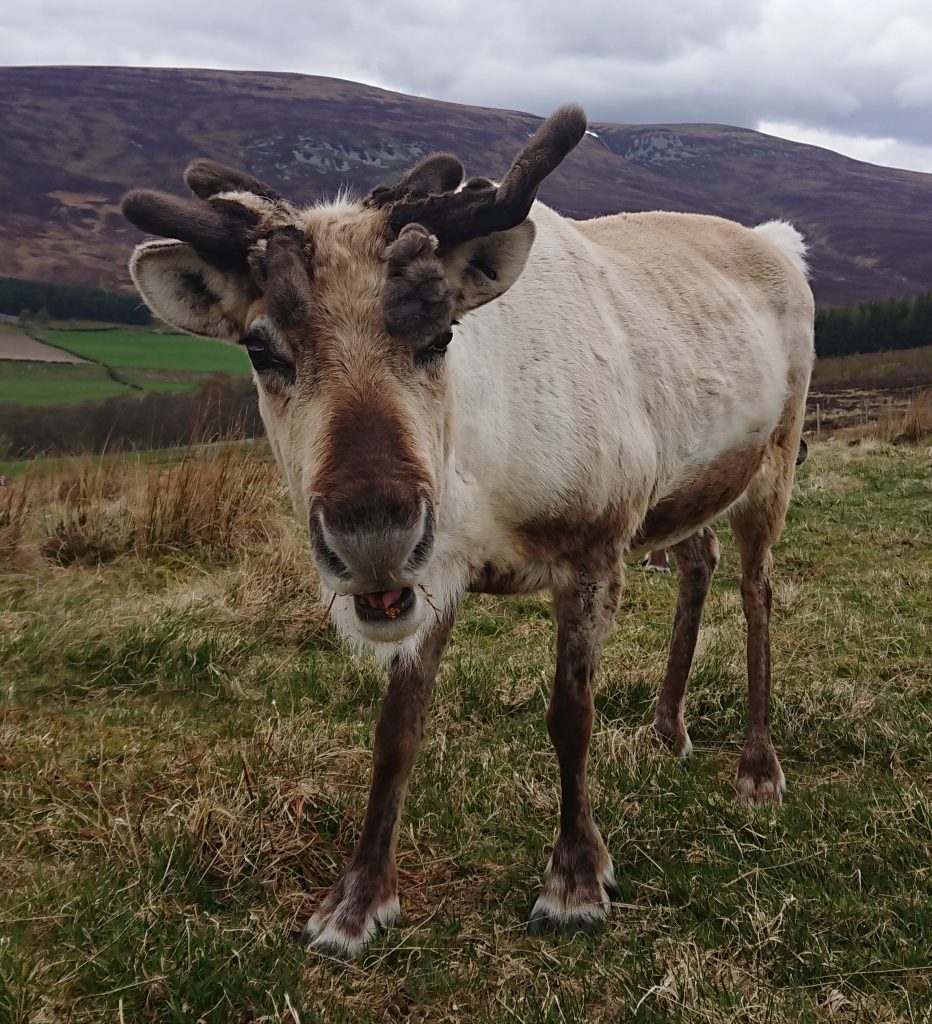
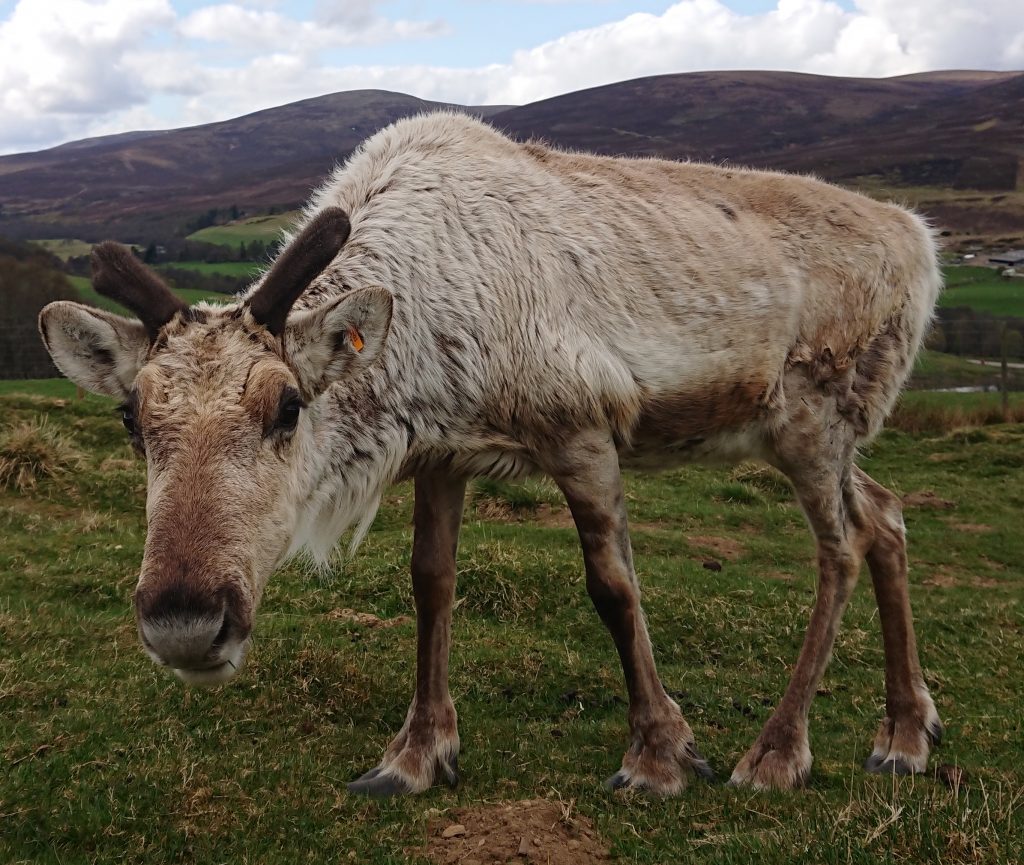
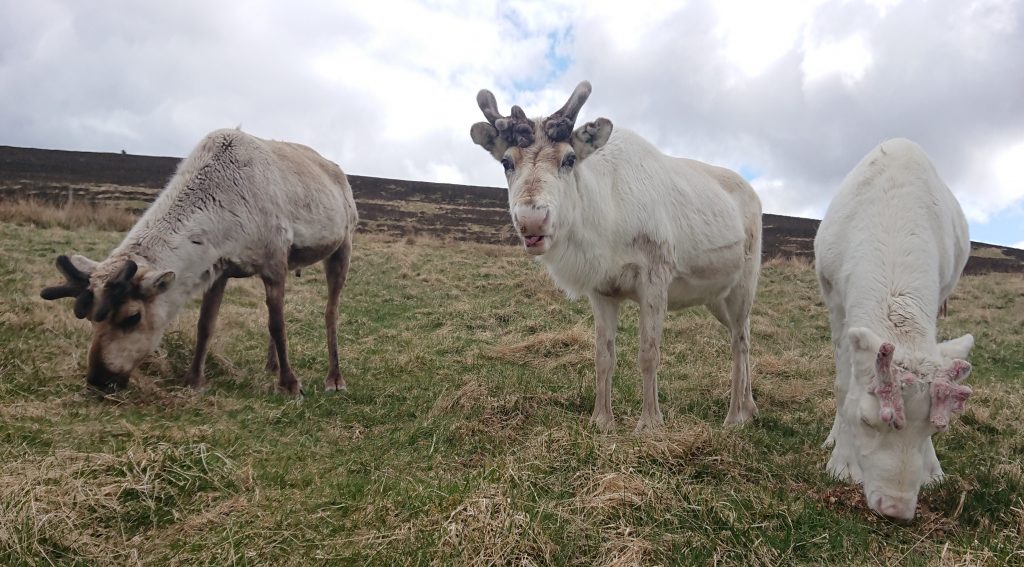
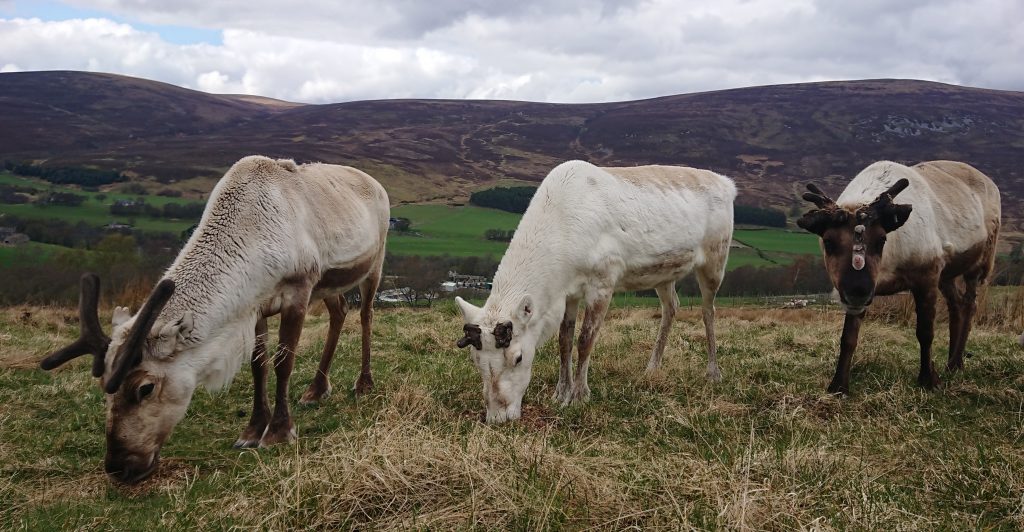
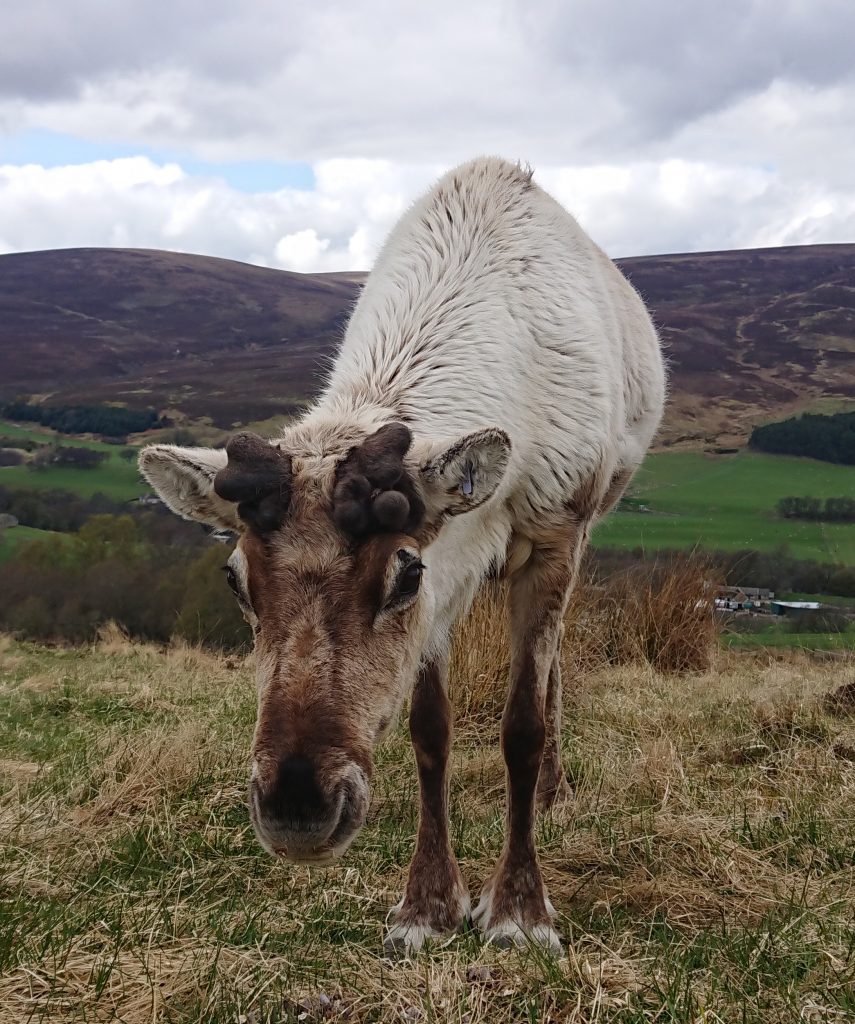

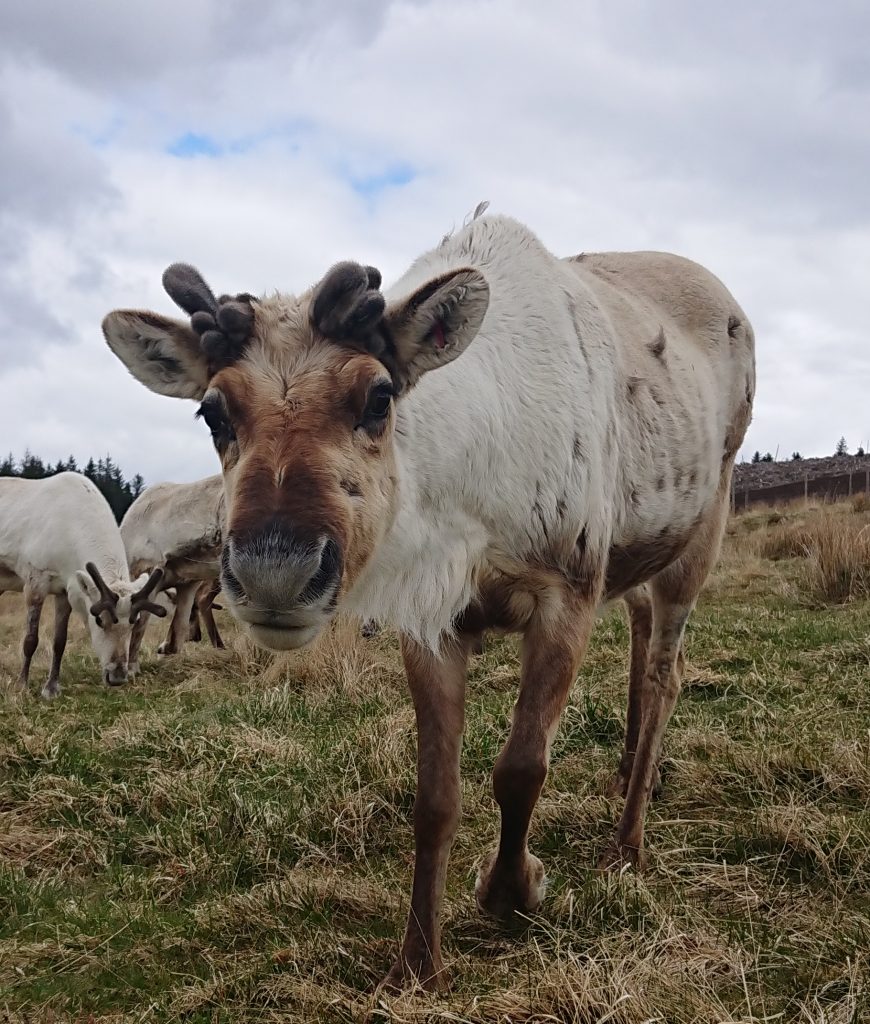
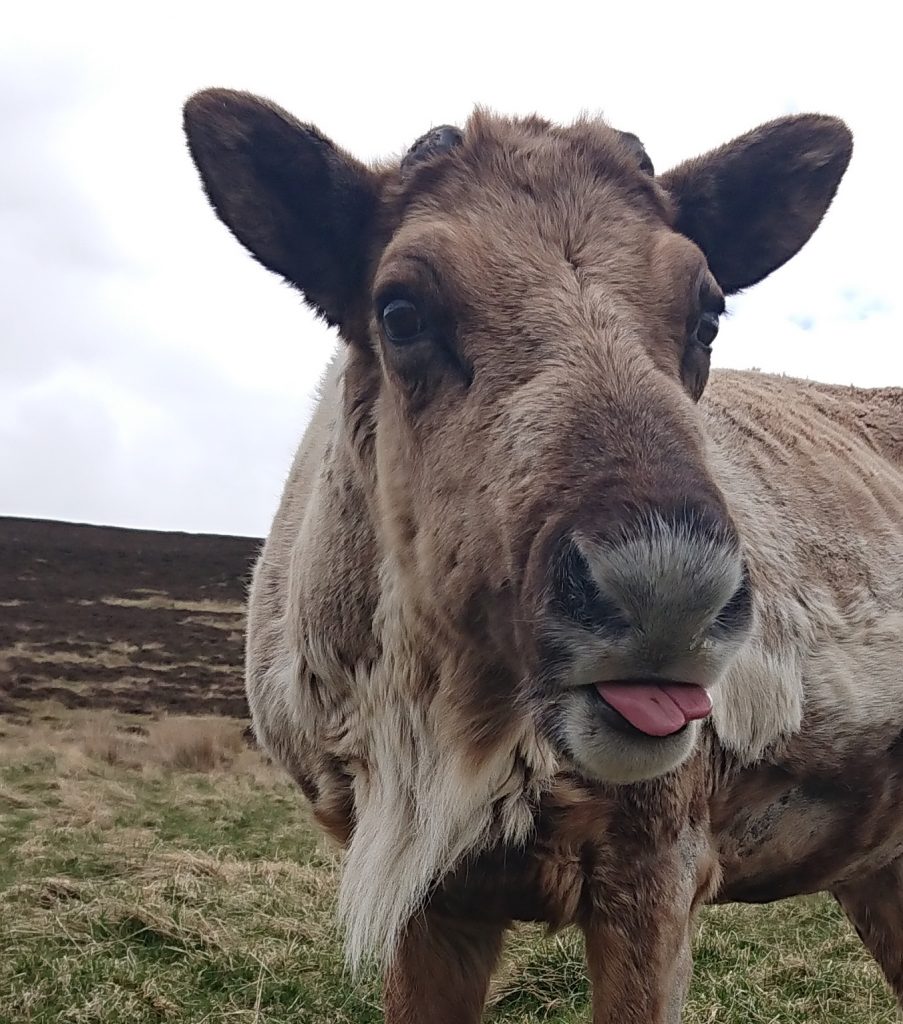
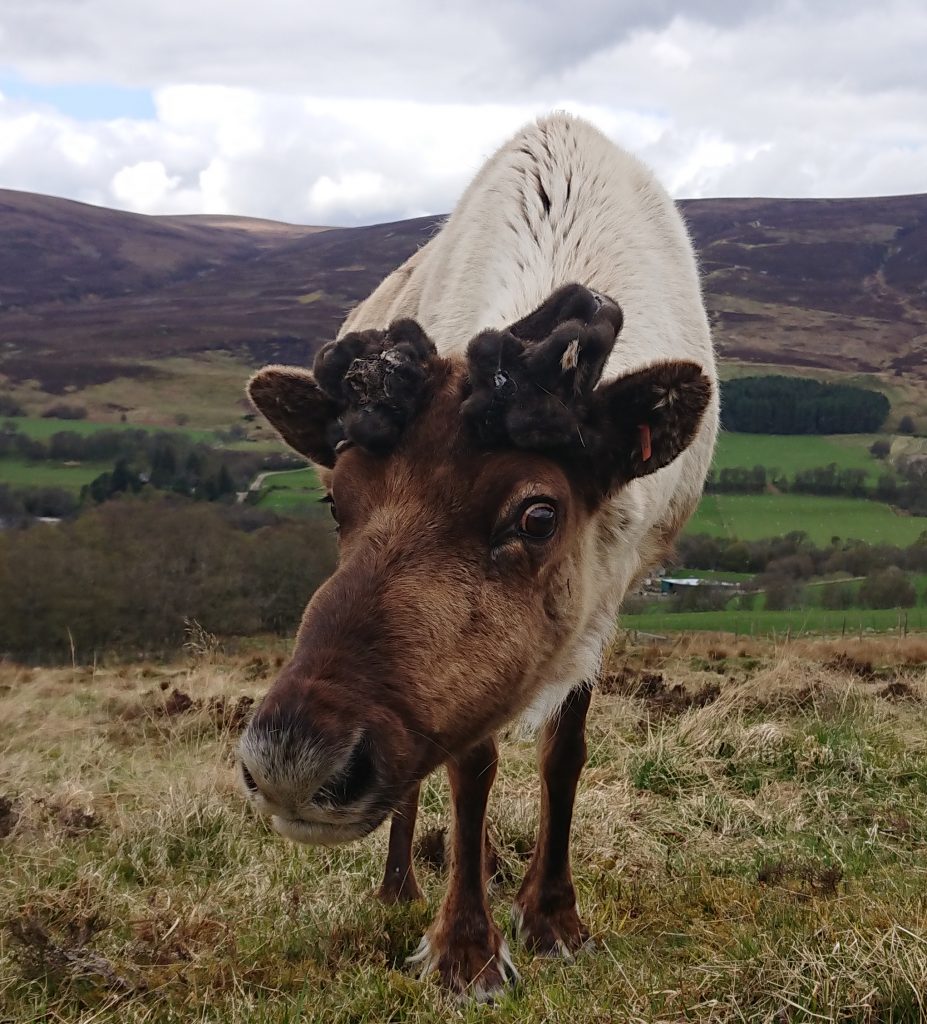
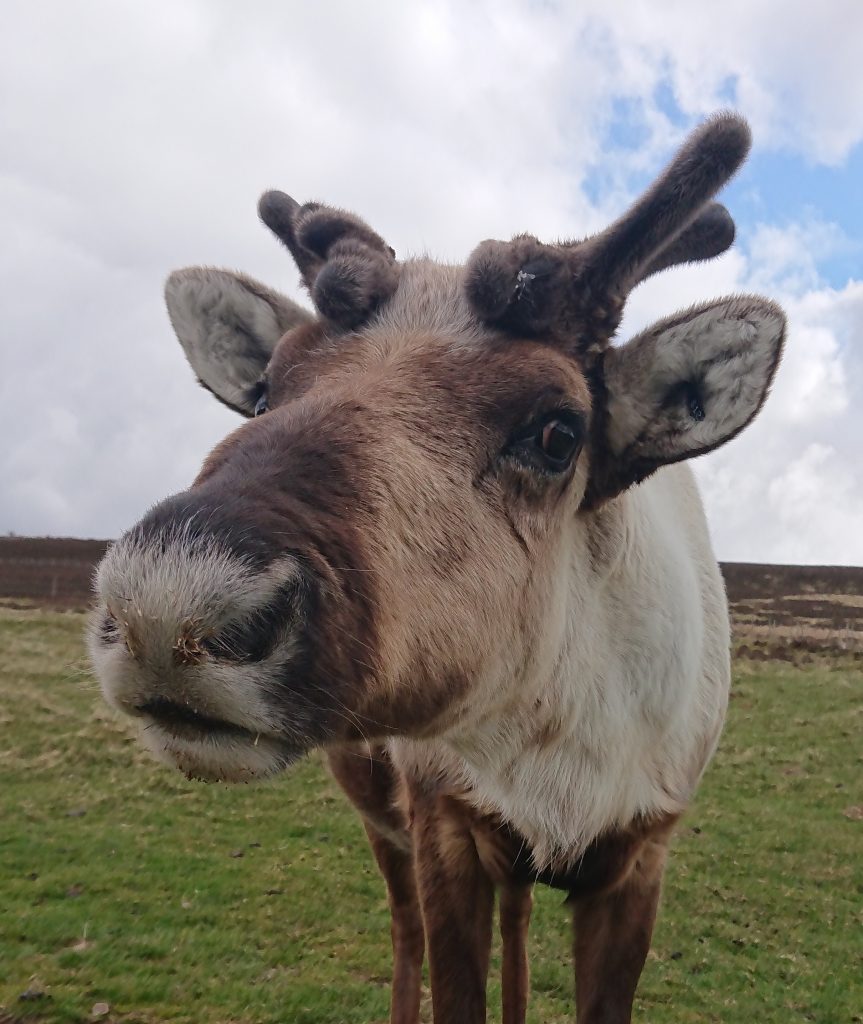
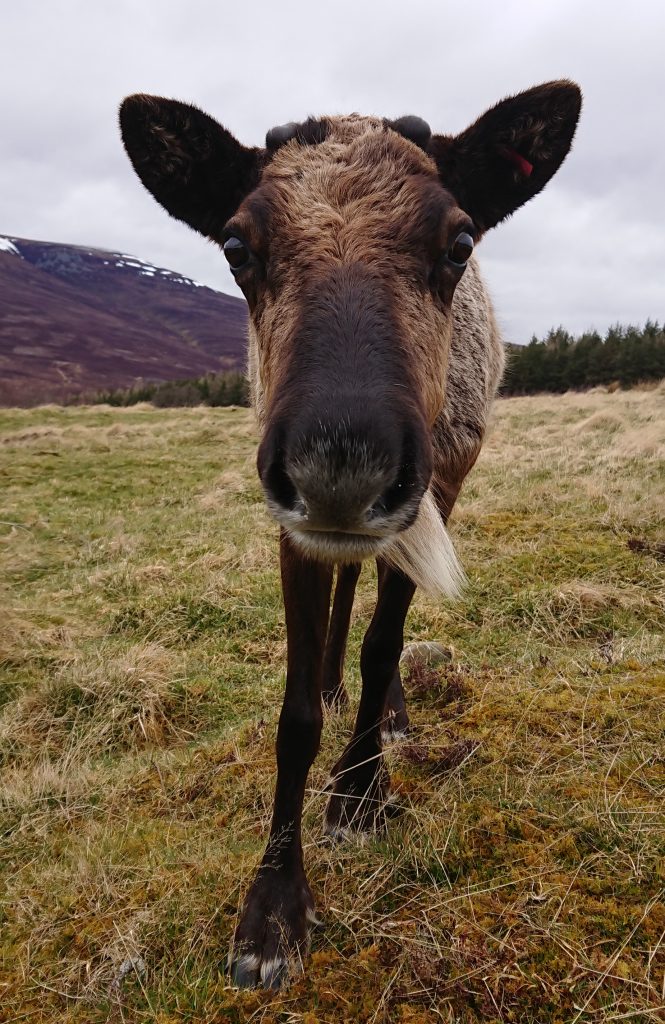
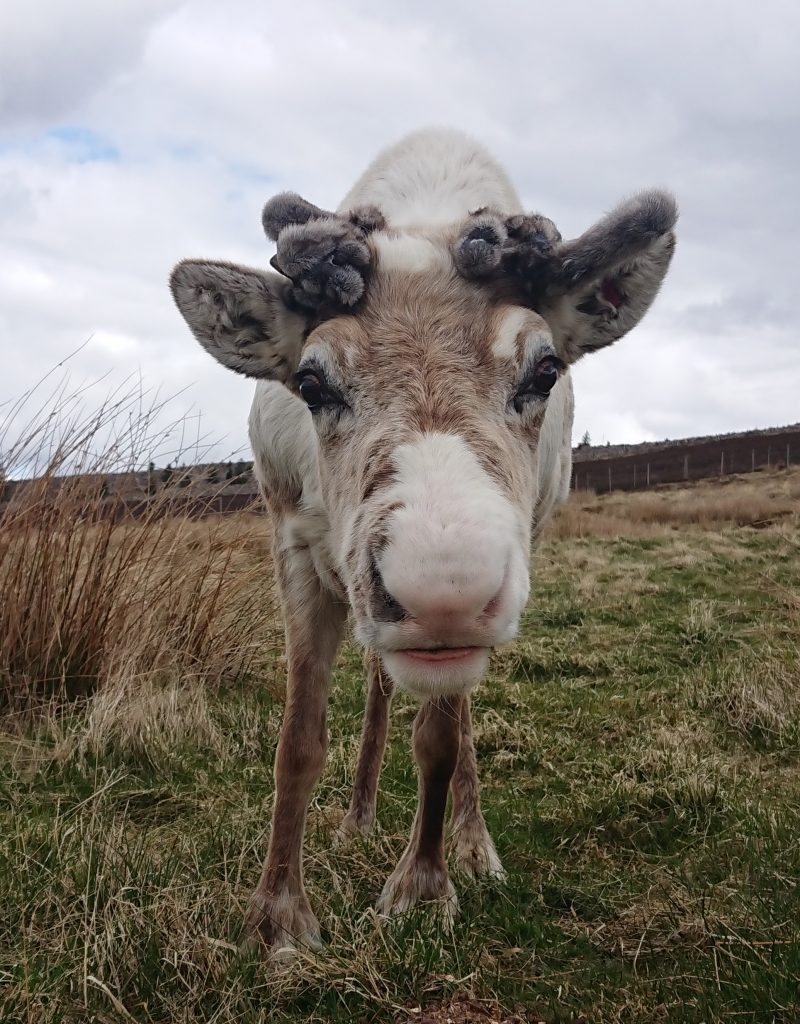
11.30am: Powered by a good cup of coffee (essential!) and a snack, my next job is mixing up a big batch of reindeer feed. We have worked out a good combination which is perfect as a supplement to the natural grazing our reindeer have on the hills. They do love their feed, it helps them put on body condition in the summer and maintain condition through winter, and means they’re pleased to see us every day – in the same way that I like to see people who have a habit of bringing me cake! We use a repurposed cement mixer to do the hard work for us, and bag it ready for the next few days of feeding the herd.
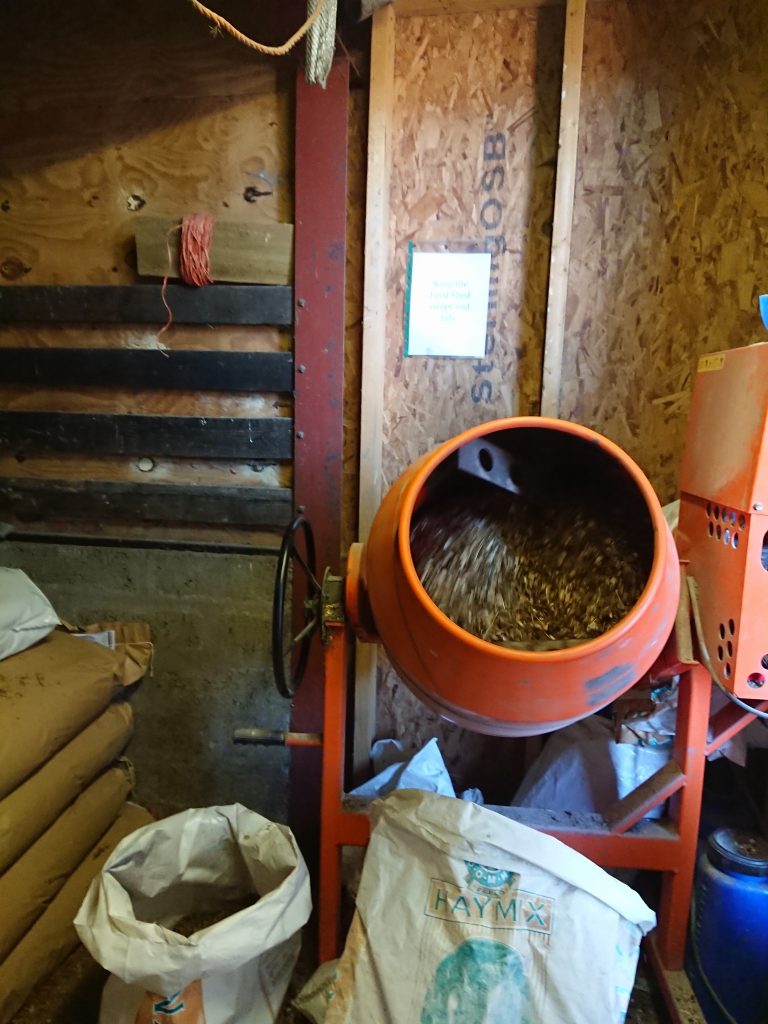
1pm: Lunch! Working outdoors makes you hungry, a great excuse to eat plenty of food! (I think I just take after the reindeer…).
1.45pm: I hitch up the snacker trailer to the back of the quad and fill it with feed for the Belted Galloway herd. The cattle were in fields in the glen, across the river, so getting there involves a bit of hopping on and off the quad to open and close gates. Once there, I run out the feed in a line and count the cattle to check they’re all present. It’s calving season and the new calves look incredibly fresh and clean, like they’ve just been through the wash!
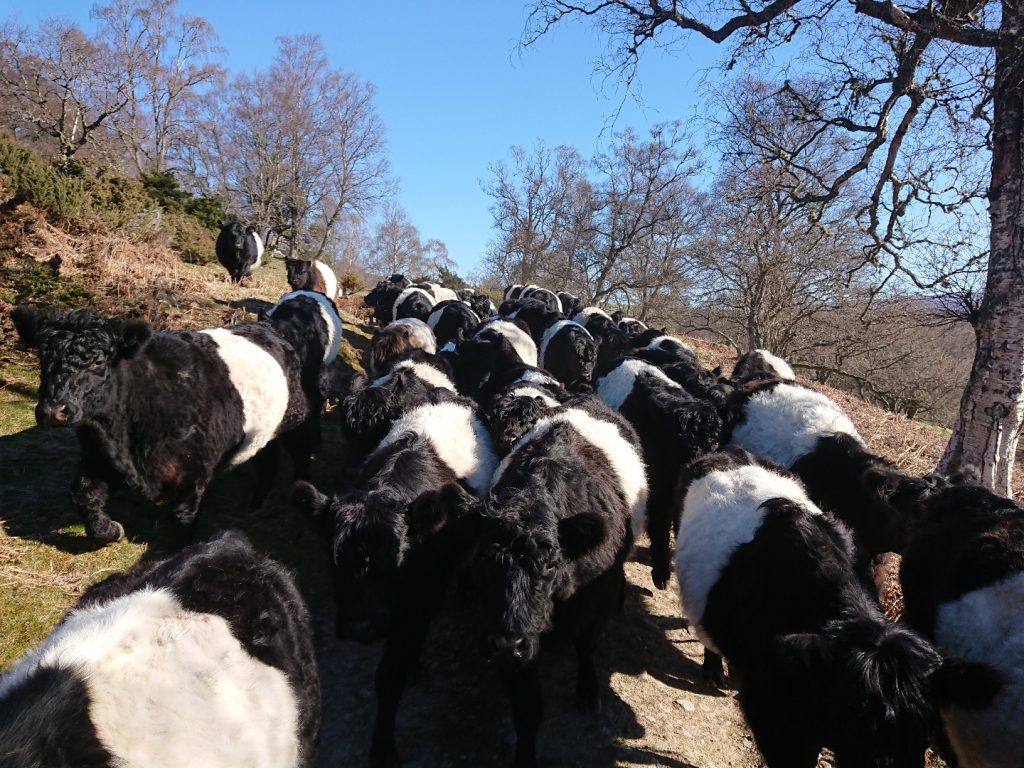
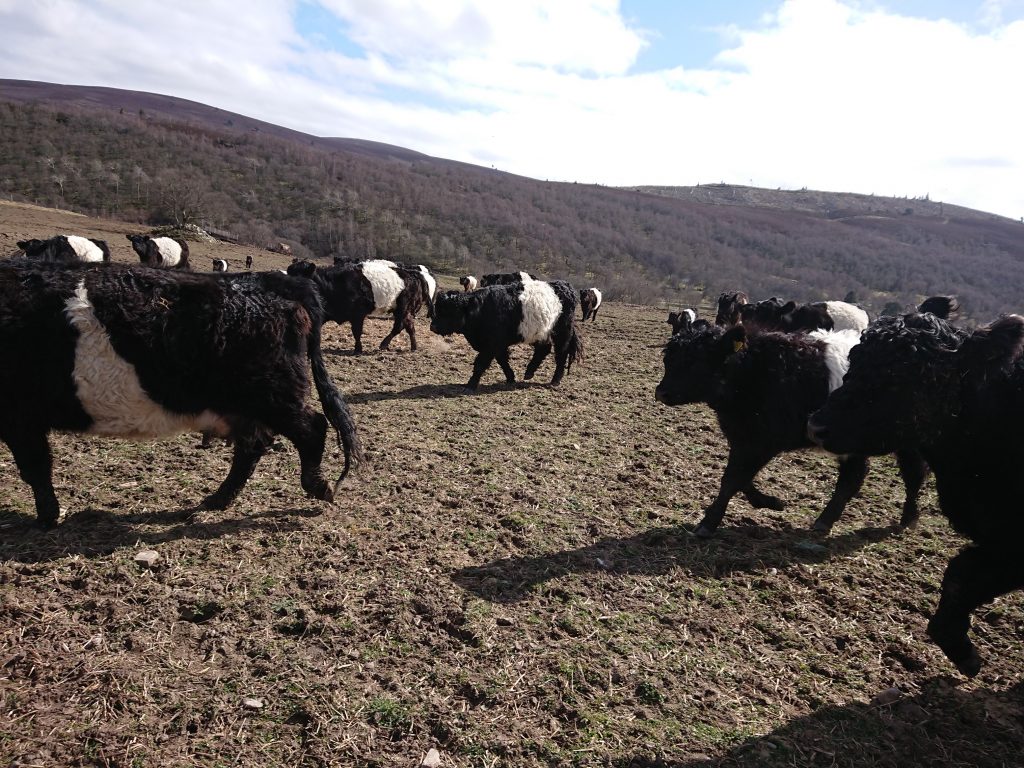
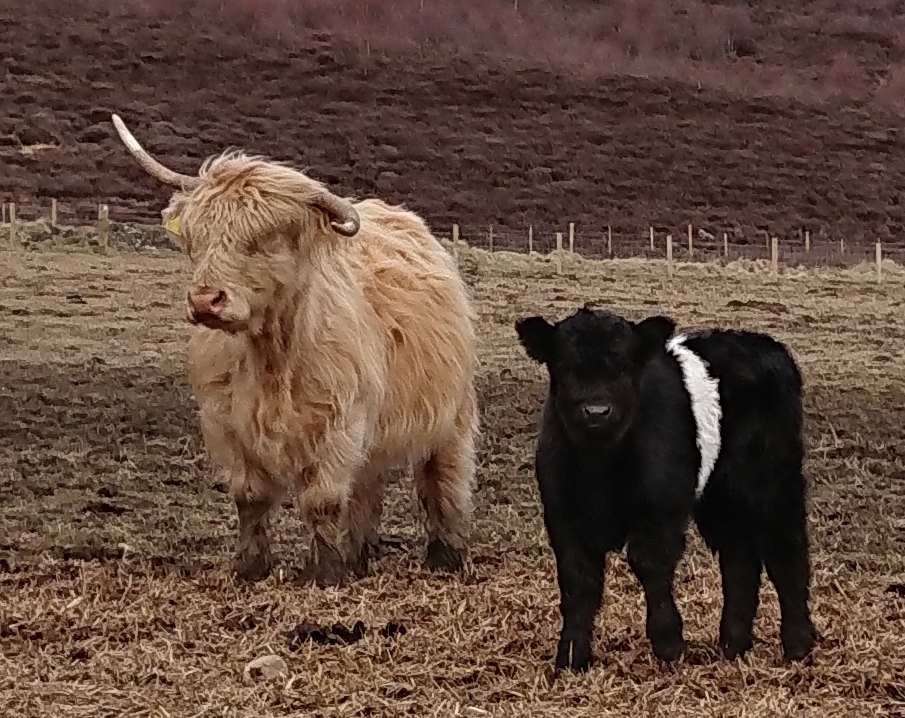
3pm: The rest of the afternoon is taken up with odds and ends, sorting out a delivery of burgers and sausages into the appropriate freezers ready for sale, packing firewood into storage, and folding up tarpaulins… there is never a shortage of things to do on a farm, even when I can’t drive a tractor!
5pm: Homeward bound. I’m tired after being on my feet for most of the day, but I’m so grateful that I can spend my time like this – I’m appreciative of how lucky I am to be out in the country, working with animals and able to pretty much forget what is going on across our planet. The reindeer, cattle and sheep have no idea that our lives have changed so much in the past couple of months – they are still living life as normal and expect us to feed and care for them as normal. It’s a welcome break from the news and social media updates which can be pretty worrying at present. Whilst you may not be able to escape to a remote hill farm, I hope you can find your own escape if you’re finding things hard, whether that is in a good book, taking a new route for your daily exercise, or deciding to turn off your laptop and phone for a day. Take care all!
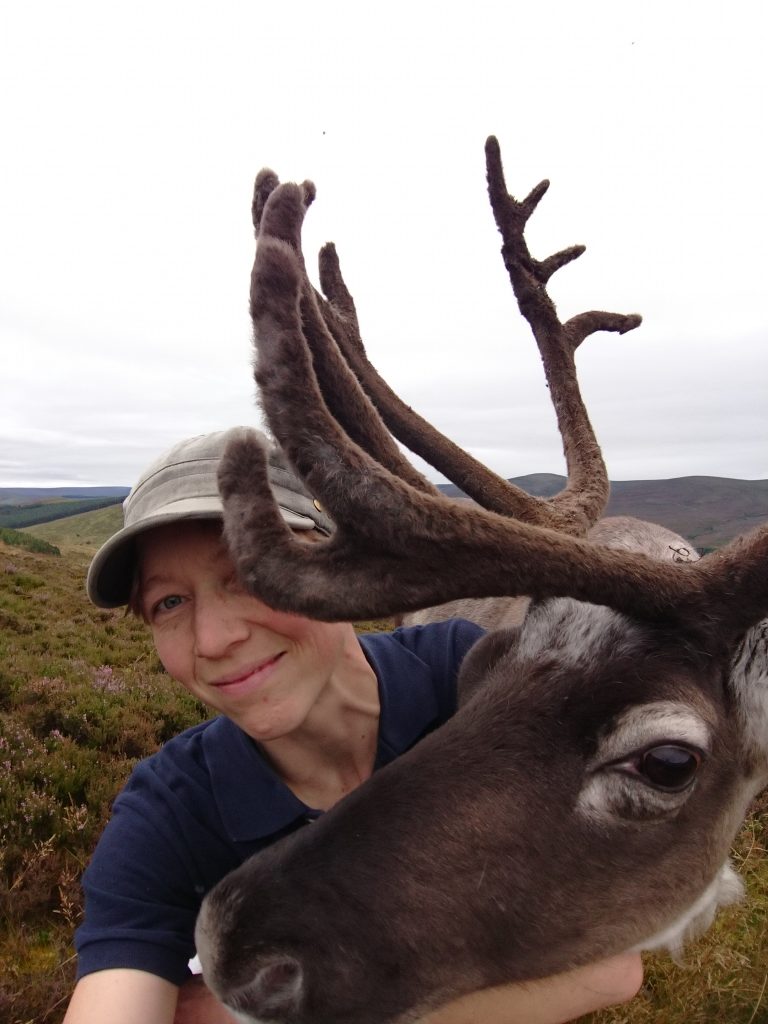
Andi

